The City of Port Karn
Geography and Description
The river and Port Karn, and it's surroundings. The river mouth, and the areas around Port Karn and it's attendant cities. The open areas (carved out of the jungle over the last several centuries) are tilled croplands, pastures, and orchards, separated by hedgerows. Over the years, many of those patches of croplands have had their top foot or so of soil converted into Essential Earth. This has the benefit of tripling the yield in those fields. Centuries of doing this have made much of the cropland around Port Karn and its suburbs into very productive farms. Over time, this "enriched earth" gets mixed into regular soil, so after several years the process needs to be repeated. The plants in the hedgerows are occasionally native jungle plants, but most are "domesticated" plants from more temperate zones. The city of Port Karn itself.History
Port Karn was originally settled by Orcs, who called it Pias Ukaduikm, or Port Kharneth. When the Empire annexed the lands in -7AFE, it was renamed Port Karn. Eventually, Port Karn North was built on the northern bank of the river, making Port Karn something of a twin city. It has two suburbs, Dhogash and Hearavgizan, also originally orcish villages. Now they are huge, sprawling, cosmopolitan towns that are the main labor sources for the huge tracts of fields that surround the area. That cropland had been painstakingly clearcut out of the jungle. There are hedgerows around most of the fields, in addition to a four foot high stacked stone wall. These are designed to discourage wild animals (and worse) from entering the fields and harassing the farmhands. However, this isn’t fully sufficient, and the town has a corps of rural watchmen that patrol the croplands, watching for jaguars, wolves, and other denizens of the jungle that might wander onto the fields. Occasionally, they have to deal with griffons, hydra, or other large monstrous beasts. There is a day patrol (manned primarily by humans, hobbits, dwarves, and elves) and the night patrol (manned mainly by orcs and goblins). Port Karn, a major trading center and port, boasts a robust wharf, mostly warehouses for the trading ships, but on the island in the river closest to the city is housed the naval base and naval shipyards. The western portion of the wharf has a civilian shipyard, much smaller than the military one, but with three drydocks for cleaning the hulls of ships and repairing major damage. There are several eating establishments and numerous taverns dockside, to support the sailors and dockworkers. It also has a pair of arenas and a track for racing horses. It is the site of the largest bridge. At Port Karn, the Altasirya River is ten miles wide. The bridge is a series of drawbridges, the roadway running fairly straight about 30 feet above the water. It has thirty four areas where the bridge raises to let ships through. Numerous ferries ply the riverbanks, taking people and cargo back and forth from bank to bank. Plans have been made for a second bridge, much like the first, but funding it has been an issue. Everyone wants it, but no one wants to pay for it. The other advantage of controlling the bridge is as a way to control all of the traffic that flows up or down the river, and thus the city controls all of the trade, and is often called “The Gateway to the Altasirya”. The local Grand Duchess is a Dwarf by the name of Frida Featherstone. Her palace is the one on the hill on the south side of the river. It’s walls are 40’ high. The citadel doubles as the local military base, housing not only the Grand Duchess’ mansion house, but the barracks, mess, infirmary, training/parade grounds, and the administration buildings. In the center is a green space, with a pond and a small grove of local plants, remnants of the jungle that used to be here centuries ago.Demographic breakdown of Port Karn, by race
Orcs 42% 28,773 citizensHumans 34% 23,293 citizens
Goblins 12% 8,221 citizens
Hobbits 7% 4,796 citizens
Elves 4% 2,740 citizens
Dwarves 1% 685 citizens
Aarakocra <1% 14 citizens
There is usually a lot of traffic on the streets, especially during the day. But the Port Karn economy works twenty four hours a day. At night almost all of the people in the street are Orcs or Goblins, working the night shifts. While there are people in the street going about their business, it is only about 30% as crowded as it is during the day. This lessening of the crowds allows carts and wagons to be used much more easily. Every once in a while, a wagon, drawn by one, two, or four horses, clatters past. By unspoken agreement, the Orcs and Goblins on the street speak in hushed voices, and refrain from shouting when they can. Even during the day, the streets aren’t as noisy as those in Adayn. The day-walkers keep their voices down, too, in deference to the day-sleepers. After all, no one wants bad tempered Orcs to be cranky from lack of sleep!
Magery and Port Karn
Different races have different rates of magical ability. The first number is the total number of people that are born with the ability to manipulate mana (aka "Magery"). Numbers in parentheses are the numbers of mages actually trained to use magic. For clarity, people born with Magery are "mages". People with Magery who are actually trained in spellcasting are "wizards", "spellcasters", "sorcerors", or any number of other terms. Not all mages know how to cast spells; Magery is an inborn talent; spells are skills that need to be learned.| Race | Magery 0 | Magery 1 | Magery 2 | Magery 3 | Magery 4 |
|---|---|---|---|---|---|
| Orc | 58 (6) | 6 (1) | 0 | 0 | 0 |
| Human | 466 (47) | 47 (9) | 5 (2) | 0 | 0 |
| Goblin | 164 (33) | 16 (5) | 2 (1, Joraaki) | 0 | 0 |
| Hobbit | 96 (10) | 10 (2) | 1 | 1 (Daisey Dubrow) | 0 |
| Elf | 91 (30) | 18 (9) | 4 (2) | 1 (1) | 0 |
| Dwarf | 17 (6) | 3 (1) | 0 | 1 (Harald) | 0 |
| Aarakocra | 0 | 0 | 0 | 0 | 0 |
Districts
Wharf DistrictMerchant’s Heath District
Old Town District
Fishpole District
Five Meadows District
New Water District
Raventower District
Goldenhill District
East District
Southtown District
Sunset District
The Crests District
New Square District
Cherry Rock District
Stone Hook District
Middlemarket District
Red Chapel District
Notable Locations
Dexon’s Trading Post
Located in Port Karn, New Square district. General store, and one of the fences that works with the New Square Skulls.Chandlery
Owned by Rist, across the street from an unnamed inn in the New Square District.Smithy
A blacksmith's shop in the New Square District, run by a smith named George.Smithy
Located in Middlemarket, run by an unnamed smith.Shrine of Seshat
Seshat is a goddess of learning, the written word, and knowledge, and her temple is also the library (access fee of $20). The building is three stories high, but unassuming, and rather plain. There are stained glass windows along the top, at about the third floor level. Inside, it's a large open space with tall shelves with rolling ladders. The tall, narrow stained glass windows are abstract geometric designs. The only decoration was a marble statue in front of the front steps. It depicted a stately woman, in a long flowing robe or dress, reading from a scroll that cascaded down to her feet. There is nothing about the statue that makes it seem that the woman is in any way divine. No halo, no carvings suggesting glowing light, or anything that might make it seem as if the woman was a deity.There is a high priest, three lesser priests, and seven librarian-guards (who are also technically clergy). The priest-librarians treat their books as if they were the most important things in the world, and look very harshly on anyone who appears to be abusing them in any way. The colors worn by the priests and librarians are black, white, and grey, and their primary weapon is a staff with a steel ball at one end, with Continual Light cast upon it, and covered with a leather drawstring pouch. It is used primarily as a light source for reading in the dark shelves of the library, but they make really good bonking sticks for badly behaving interlopers. All of the staff are literate.
The High Priest is Gheen the Grim (Orc woman, very smart, with an IQ 12).
Priest Laurenz Rohr (Human male, knows Imperial, Lurkash, and Mekiitagi, plus a little Quenya. Skilled with his staff).
Librarians:
Nirdenu Lissaza (Human Male, can speak Imperial, Lurkash, Khuzdûl).
Shanne Lyrnas (Human female, can speak Imperial, Quenya, and Khuzdûl).
Brudgokk Heel Skinner (Orc male, has an arming sword as a sidearm; knows Imperial, Lurkash, and a smattering of Mekiitagi).
Drogruk the Mad (Orc male, has an axe as a sidearm, and knows Imperial and Lurkash).
Shaeri Stoutbeam (Hobbit female, Language talent, knows Imperial, Lurkash, Khuzdûl, some Quenya, some Mekiitagi, Harada, and two other languages not spoken much in the Empire).
Rakkad Mujir (Goblin male, overweight, knows Imperial, Mekiitagi, and a smattering of Khuzdûl, mostly swear words learned from the one of the Humans).
The Pig’s In His Cups
This is Eykit’s favorite tavern. It has a series of good safes to store goods (Elend likely chose the locks on them). It’s attached to the Inn on Drefeg’s Street. Built of stone and timber, with a reddish tile roof. Two windows on the western side. Oil chandeliers hang from the tall, vaulted ceiling, with soot-stained thick beams crossing from side to side of the room. It has hewn tables and benches, worn smooth by patrons over the years. There are carvings on the tables: initials, pictograms, lewd sayings, and curse words. Tin drink ware. It occasionally has a Hobbit minstrel with a hurdy gurdy play (who knows the song “Vanya’s Petticoats All A-Flutter”). Eykit can often get free food and drinks there, with a bit of effort. There are often (usually) several members of the New Square Skulls lounging about the tavern.Inn on Drefeg’s Street
The main place that the crew stays at when in Port Karn. Krogan Steadyhand is the innkeeper. He’s in his 50’s, but still strong, and not prone to losing his temper. There are four rooms on the first floor, along with a common area to lounge in. There are five rooms on the second floor. Bathrooms are at the end of the halls. Connected to it is The Pig's In His Cups, and there is an interior door connecting the Inn's lobby to the tavern.Ministry of Records
A government building housing the records of births, deaths, land transactions, history, surveying; also has maps.Khlem’s Gems
A jeweler's shop.Jonat Brothers Tailoring
Tailor shop on Caraliza Street, in the Old Town District.Third Street
One of the longer streets in Port Karn, running roughly north/south; it is mostly shops and storefronts, with the occasional apartment building. It is one of the more busy streets of the city.Yeasterday’s Loaves
A bakery in the Old Town district.Haversham’s Grocers
A grocery store that does deliveries to the wealthy, located in Old Town.Speedy Laundry Service
This is a place that Eykit goes to when he needs a fence that isn't affiliated with the New Square Skulls. Lucianne, the proprietor, is a fence that Eykit goes to when he has something to sell that he’d rather not have people know he was involved in. She is tall, and very strong, her arms corded with muscle from stirring laundry cauldrons and wringing out clothes.The Wharf District
The dockmaster has employed a mage to light the streetlamps with Continual Light. The mage likes colors, so most of them are varying shades of yellow, orange, purple, and blue, with a smattering of reds and greens. It gives the commercial/industrial area a festive air, at least at night. Most places at the wharves use colorful banners and awnings to make the daytime environs as festive as it seems at night.Fishtail Street
Street located in the Wharf District.Main Port Karn Rural Watch Office
It is located in the Southtown district, not too far from the edge of town. Day shift has a Human male and female Orc working there.Southtown
A low income area, primarily inhabited by farm hands that work in the fields near the city. Houses are primarily wood, many without even stone foundations. Many are run down, and several could be considered “ramshackle”. Where an empty lot exists due to the collapse of the structure, or it has burned down, there are still people living there, either in tents or in temporary structures formed of scrap lumber and oil tarps. There are few Elves here; the need to repair their house every other day (from their long-lived perspective) would drive them insane. There are few Dwarves, because their inherent sense of quality workmanship precluds any buildings as rough as these. So the population of the area is made up of Orcs, Humans, Goblins, and the occasional Hobbit. Lamp posts are few and far between, so the neighborhood is very dark at night.Cobbler’s Row
A street in NW Port Karn, in Everyman Jack territory.Tondene Imperial Army Base
It is a walled enclosure in the southern area of The Crests district, on the outskirts of the city. It sits on a hill, overlooking some residential buildings, and, past them, the Liscerne Race Track. There is a paved, flat area used for maneuvering practice. The barracks are wood and stone buildings, four stories tall and filled with large rooms with bunks stacked 3 high. There was also an admin building, 3 stories tall and filled with offices. Sur-Rhea Henders Killian: officer at the Tondene Imperial Army Base. Human, bald, with an impressive mustache. Light brown skin, scarred forearms, large scar on his face that had just missed his eye. He gave Taid some information about local nobles with vineyards and/or wineries.Courier/Messenger Station
There is a courier/messenger station not too far from the military base. They have Aarakocra there as employees, as well as the usual runners and pony riders. It’s not large, just a small office, just one storefront in a building of storefronts.The Peasant’s Flask
Tavern, located in the south of Port Karn, about four blocks from NSS territory in the Middlemarket district. Dark, dingy dive. Below average lagers and passable ales. Does serve some whiskey, but it’s not good whiskey. But it’s not expensive, so it’s often crowded. Heavily frequented by Orcs, there is a corner of the tavern that is set aside for “disputes” that are really just excuses for fisticuffs. There isn’t much in the way of furniture or breakable items in that corner of the tavern. It’s not too far from a City Guard station (where Almë had been incarcerated for a little while).City Guard Station
A three story structure, with the building forming an “L”, with a wall enclosing the other two sides of a courtyard. On the first floor are 7 jail cells, about 2m x 3m, made of stone blocks with mild steel bars for the fourth wall. There are no windows, but on the two longer walls are built-in wooden benches; at the far end was a chamber pot. There are 4 cells down one side of the hall, and 3 on the other. Where the fourth cell would be was a desk, with a guard. By him was a strong, reinforced locked door that led to the rest of the station, locked from the outside. The station has 4 interrogation rooms. The front desk is manned by a Tethys, a rank similar to Sergeant. The main interrogator is an Orc.White Lion Tavern
Located in NSS territory, it’s on the higher end of the scale. They have patio seating.Hydrangea Inn
An inn located in the Middlemarket District, known for its courtyard gardens, in which hydrangeas are a focal point.Port Karn Agricultural Council
The largest and most powerful mage guild, and the only guild with an actual enchantment division. It is also something of a farmer’s union, a farming planning council, and the center of food logistics for the city. They are as much a division of government as mage guild, and thus has more political power than the others. They are relatively uncorrupted, and seem to take their charter seriously. It helped that they also are the richest, so have little incentive to break laws and gain profit via criminal means. They do just fine without having to “cheat”. There are likely corrupted individuals in the organization; there always are. The guild is over 600 years old. They have been sending mages into the surrounding farmlands to do various magics to enhance crop yields to avoid famines for all of that time. They have also been sending mages out to make areas Essential Earth, which lasts for years, instead of seasons. Eventually, the soil gets diluted with dust, fertilizer, tillage, and non-Essential dirt, and needs to have the magics renewed. Administration offices are in the largest of the buildings on the PKAC campus. It’s also where most of the agricultural planning and execution are located, along with the records. The Farmers’ Union offices are also in that building. Between the buildings is a courtyard, with several raised beds. They seem to be able to keep tabs on any plant mages in the area. One of their employees is a Dwarf named Skadrel. Skadrel’s office is a cluttered mess, with lots of papers (some text, many are maps of various kinds). A large map of the Avondale area, with colored pins stuck in it, is on the wall. There is also a filing cabinet in the office. Marco is another employee, likely some kind of groundskeeper (Marco lost a 10 mark bet with Skadrel, about Almë’s need for seed). Most enchantments are bespoke items, although there are a few “common items” available. Arrowheads with various minor enchantments and scrolls are the main things that can be bought “off the shelf”. Scrolls can be made by any mage with Magery 1 and basic language skills and it doesn’t require the Enchantment spell as a prerequisite. They also only cost about $33 per point of mana to cast the embedded spell (so a scroll of Purify Water would only cost about $33). Scrolls do take 2x the amount of time to cast, and require the user to read it aloud, and have the magical talent required for the spell (so a mage with Magery 1 can’t use a scroll with a Magery 2 spell embedded in it). PKAC History It didn’t start out as a mage guild. It was just a farmer’s union in the beginning, but kept contracting mages to work for them, until they figured that having a magic department would be beneficial. Then some rather ambitious mages kept growing that department until it basically ran PKAC, adding more and more services to it, all in the name of advancing the agricultural agenda. Personnel Magister Edain (taught Almë Haste) Magistra Allasyn, mage at PKAC who also does thaumatological research (they sold her a staff with a large crystal on the end of it, and asked her about the Servitor head) She’s a part of the Esoteric Studies Division. Magister Jorick Fields, PKAC, Esoteric Studies Division. High mage. Think Peter Cushing. Old, needs a staff to walk. Thin, clean shaven, narrow jaw, thin lips, bright lively blue eyes that seem to peer into your soul. Doesn’t look like he knows how to smile. Has a high, reedy voice. Magestra Lyta Brenner, head of Esoteric Studies, PKAC. Grim, severe, short brown hair, no makeup; wears plain, functional clothing. In her 30’s. She is the one that headed the study of the Servitor of Ghebbiloth’s head. Harald Darkstone, enchanter mage at PKAC Almë is a member of PKAC.Sentinel Group
A mage guild located in the Merchant’s Heath district. It primarily works with Protection and Warning spells, Movement spells, and, to a lesser degree, Elemental spells. Their focus is on bodyguarding, protection, and security for their clients. What they don’t advertise is that they also do surreptitious observations—spy work. Ruby is aware of this, as it became obvious to her from what they didn’t say when she asked her questions. Membership dues are $200/month, giving access to the other members and their library. Their headquarters is a three story building, with a basement. Made of green-painted bricks, red tile roof, white painted trim. There is a half flight of stairs leading to a patio where the awning-protected entrance is. There are benches along the stone walls that surround the patio. There are usually a couple of people lounging here, and acting as gate guards. (When Almë went there, there was a Dwarf and a Human.) The front desk clerk is Shist Stoneweaver (Dwarf). 19 mages, with a support staff of 20. Their primary jobs are security and body guards. They specialize in Movement, Protection and Warning, Body Control, and some Elemental spells. They charge anywhere from 100 marks per day to 500 marks per day, depending on the job and the mage they assign. They charged Almë 1500 marks to teach him Haste. They seem to have good surveillance in their lobby, at least (Eykit snitched something off of the front desk, but it was immediately noticed and he was “encouraged” to put it back.) They have at least one conference room, with a table and several chairs, paneled in blonde wood. The window looks out on an alleyway. Magister Allain (Human), one of the officers of the guild. Magistra Sabina (another of the officers, and the main magic instructor) taught Taid Icy Touch (which cost him $400). Taid Lasu is a member of the Sentinel Group. Dues are 200 marks per month (gives Taid access to other members, and their library he also has obligations to them as well: they might send him on body guarding or security missions.The Elementalists Guild
Specializes in the elements: Air, Earth, Fire, Water, Light, and Sound. They are the second largest mages’ guild in the city. They were what people think of when they think of a “mages’ guild”.The Soma Group
Specializes in magics affecting bodies and minds, with particular focus on healing magics. While not as altruistic as the Red Star, they will often help out during catastrophes and accidents, donating their services when necessary.The Red Star
The premiere guild when it comes to healing. They operate several hospitals around town, providing medical care to the people of the city. Some for only a small fee (and sometimes for free). In addition to healing mages, they also have mundane doctors, herbologists, and alchemists on their payroll. In a sense, they are also a very large mages’ guild, if all of their non-mage employees are included. Most of their operating expenses comes in the form of donations, both directly and via various shrines.Engineers’ Guild
They focus on Making and Breaking, Earth, Water, and Light spells. They are responsible for many of the infrastructure projects in the city, even if the work doesn’t involve magics. Most of their mages are also craftspeople of one stripe or another. Lamplighter mages are usually drawn from the Engineer's Guild (although some come from the Elementalist Guild).Artem, Tenant, and Tricola
Specializes in communication and knowledge magics. Their guild hall in Port Karn isn’t overly large, but that is deceptive. Being able to communicate instantly gives them the ability to have what amounts to franchises in different cities, so while they aren’t large in any one city, the fact that they could be found in most large settlements means that they are one of the largest guilds in the Empire. The offices are 3 stories in height, made of brick. There is an awning in the front that shades the sidewalk, with a large sign above it stating the name of the guild. Their symbol is a blue circle, shaded such that it appears to be a sphere. Inside the building: there is a small lobby office, with a clerk behind a desk; the clerk’s name is Mick. There is a bell on the desk, used to summon others from deeper within the building. There are two doors on the back wall, one on either side. Godric is another employee (he’s the one that led Almë around, showing him the building). There are “testing chambers” to test potential employees for magical ability (they used a conference room for this with Almë). The first floor is comprised of meeting rooms, personal offices, and the lobby. Each meeting room is about 3m on a side, with an oblong table with six chairs. These rooms are where employees meet with clients. Client services are confidential. The second floor has a couple of offices, appointed with couches, chairs, and desks. This is where mages do the communicating and object seeking parts of AT&T’s business. Mages doing these things include Alan, Violet, Feka’ini. Mages work 8-10 hours a day, although some work longer, especially kidnapping cases, and high-value missing item cases. Third floor is for divinations. There are multiple rooms, each devoted to a different type of divination. One room has a series of tables and single chairs, with a glass case on one end of the room, filled with tarot decks. Next to that room is a room with several beds, with draperies around them. This one is used for dream divinations. The next room is for fire-gazers and lecanomancy (dropping things into water). It has braziers, tubs of water, and a small furnace in one corner along with a cabinet full of of crucibles. The air is hot, even hotter than the sweltering heat of the subtropics that Port Karn inhabits. Other rooms on that floor are devoted to rune-casting, tossing sticks or bones, and crystal ball gazing. Executive office: 3m x 5m, bookshelves along one wall, nice desk and chair in the corner, two smaller chairs in front of it, for visitors. Side table along one wall, with crystal decanters filled with high end alcohols (brandy for sure, likely whiskeys as well). All of the furniture in the room is high end stuff, and matching in decorations. Leather blotter on the desk, and a Dwarfclock. (This had been Zorion Clemens’ office before he had been captured by Central). It is now the new guild master’s office. Its window is barred, and faces the street.The Velvet Palate Cafe
Across from the AT&T offices is a cafe, with patio seating on the street. Not far down the street is a ceramics shop. Next door to AT&T was a construction site, putting up a building (it’s likely finished by now, though). A couple of buildings down the street is a tailor shop (with a proprietor who sympathizes with those fleeing the city guard).Royal Eagle Inn
It is about 3 blocks from AT&T, in the Walled City district. It’s a higher end inn, catering to people of means. It has at least one room with an integral bathing room, complete with a large tub ($120 per night, includes breakfast). The bed is large and soft, requiring a step stool to get into. There is also a table and a chair in one corner. Large structure, 4 stories tall, made of stone. Roof is shallowly sloped, of tile. 20 rooms for guests; Common rooms on the lower two floors; private rooms and suites on the upper two. Half of the bottom floor was a tavern; the other half was split between the lobby and a large common room, and the innkeeper’s quarters. It has a staff of over a dozen people. Prices start at $20 a night for a spot in a shared bed, and go up from there.Ander's Fine Bows
Owned by Ander Osgar, bowyer. Has a workshop on Woodcrafter’s Row (nickname for the section of Urukhem Street between Drakthar Way and Fourth Street, in Merchant’s Heath). He lets Elitheris use his tools and some storage space to build her bow, for a $20 weekly fee. (Ander is based on Joe Gibbs, warbow archer and bowyer at Hillbilly Bows). He is polite, and respectful of both people and the things they make. He was really impressed with Elitheris’ current bow, which she had made. His shop has all the tools and jigs necessary to make bows and arrows, with the exception of the arrowheads themselves. He has two apprentices, Meria Swiftfeet (Hobbit, round of face, curvy of body, red curly hair, clear soprano voice, pretty face, who was working on her Journeyman project when Elitheris was last there) and Kargath Cromûsh (Orc). Both are willing to help out if Elitheris needs another pair of hands for whatever reason. Elitheris currently has her materials stored there, as well as some specialized glues (one specialized for wood, one for sinew and horn, and one more general that works on anything, but not quite as well as the specialized ones) made by Ekain the alchemist (who also told Elitheris that he would like to make some special stains and varnishes for her, based upon her design and materials used). She has some other materials stored there for the rituals as well (candles, herbs, a small athame carved out of bone with a wood handle, a set of small copper dishes with brass inlay).Annalynn’s Fine Clothes and Tailoring
A high end tailor in NSS territory. There is a bell on the door that rings when it’s opened. There are a few racks of clothing along the edges of the room. The center is open. The primary tailor is Human, male, attractive, and very well-dressed. The shop caters to every race in the Empire. There are at least two other employees as well. While the most notable tailors are located in Old Town (where most of the monied people in Port Karn shop), Annalynn's is every bit as good, and about 10% cheaper than those more famous tailors. Not that the prices aren't high here, too. You get what you pay for, and Annalynn's pampers their customers.The Citadel, and Featherstone Keep
It’s as large as a city district, comprised of the keep, an Imperial Army base, and a collection of government buildings and admin offices. The work of the government of the province happened here. The keep is six stories, stone, designed and built by Dwarves. Few stairways; there are mostly ramps, as follows Dwarven styles. Guards at the gate confiscate any weapons larger than an eating dagger. Much of the area is flat, covered in stone pavers, and used for military drills and maneuvers. Admin buildings are 4 stories high, of grey brick and pale red tile roofs. Very busy place most days, with lots of foot traffic doing the business of governing. The head of food procurement is Adelard Gammidge (Hobbit, ample belly, honest face, blonde curly hair). There is a servant who acts as fashion advisor and instructor of etiquette (Dvalin, a Dwarf). Baroness Karan Bethany Alanna Walters uses the keep as her primary place of doing business.Ministries
Being a provincial capital, Port Karn has several ministries in charge of its infrastructure and operational activities.Ministry of Urban Development: The group in charge of city planning and renovation. They work closely with the Engineers' Guild, and the various construction guilds.
Ministry of Commerce: The group in charge of economic activities; the wharves fall under their aegis.
Ministry of Road Maintenance: Originally a subgroup of the Ministry of Urban Development, they broke off to have a bit more autonomy and to be more responsive. They build and repair the roads that are the lifeblood of commerce in Port Karn. Like the MUD, they have a lot of contacts with the construction guilds.
Ministry of Government Housing: Also originally a subgroup of MUD, they found that autonomy suited them better. They are in charge of housing development in Port Karn and its surroundings. And because of the way the farms are managed, their reach extends out into the farmlands as well. They make sure that housing is built according to some minimum guidelines.
Ministry of Traffic Control: This ministry takes care of both land and sea traffic. They also oversee the network of lighthouses that dot the river delta. Caravans have to register their routes and delivery times with this ministry. They are also in charge of setting requirements and specifications for road width, curb height, sidewalks, and cart and wagon specifications.
City Guard: The city guard is there more to keep the peace than they are to fight minor crime, although they do a bit of that as well. Mostly they are there to keep the nobility safe (usually from the small folk who may take issue with their decisions). Most of the crime (and crime fighting) is handled by the local thieves' guilds, which started out as citizen protection groups, since the city guard wasn't doing it.
Ministry of Incarceration: Most of the prisons and madhouses are funded by tax money, and thus run by the local government. They work closely with the City Guard.
Ministry of Fire Suppression: They operate a chain of fire stations, complete with pump wagons. They are also in charge of organizing bucket brigades, and offer basic fire safety training. Often they offer consultation services to the Ministry of Government Housing and the Ministry of Urban Development.
Ministry of the Sewers: This ministry is in charge of the sewers, both construction and maintenance. It's their job to make sure there are no blockages or backups. They are also supposed to make sure no one is living down there, but....
Ministry of Water Services: This ministry makes sure that there is water in the wells, and that it's potable. They also control the network of irrigation canals that extend all over the farmlands area.
Ministry of Records: Has rooms filled with filing cabinets holding the records of births, deaths, real estate transactions, immigration, local history, surveying, taxes, business filings, and any number of other categories. They interact with all of the other Ministries.
Ministry of Finance: Main holders of the purse strings. It's their job to take the orders of the people in charge and make their plans happen. They also handle the taxes and tax collectors.
Ministry of Diplomacy: They handle the diplomatic relations between the city and any visiting nobility. They also handle the interactions of the local nobility.
The Excited Fish
Tavern on the wharfs. Besides drinks, they are known for their fish and chips.Bakerson and Conrad
Commodities trading firm in NSS territory that Iceman uses as an office on occasion. They deal in agricultural supplies, pottery, and barrels.Chrysanthe and Valtona’s Wagons and Carts
There is a wainwright’s shop in the Southtown district, not too far from the Manor. Chrysanthe and Valtona’s Wagons and Carts is a converted warehouse on the corner of Third Street and Sarkis Lane. It is a building three stories tall, a simple pole barn with plank walls and roof. It has large barn doors allowing entrance to the work floor. Next to the building is a fenced-in section with several carts and wagons parked there, all of them covered in tarps. Most of the space is a work floor. Two wagons are in the process of being constructed, and they are both the center of activity as several workers build each one. On one side of the space are racks and bins of materials and subassemblies. On the other is a small office. Through the open windows that overlook the shop floor one can see two women sitting at desks. One is a Hobbit, the other a Human. The Human woman is short, for a Human, barely above a meter and a half, dark complected, with dark hair she has dyed with some reddish streaks. She is pretty, and wears simple clothes that were well-made and cared for. The Human, Valtona, handles sales. Chrysanthe handles the day to day operations.Balgram’s Bakery
Located in Middlemarket and run by a Dwarf (specializing in pastries, pies, cakes). A sign over the door said “Balgram’s Bakery” above a painted cake and pie. As soon as one opens the door they are hit by the smell of freshly baked goods, honey, and sugar. And a hint of fruits. A multi-tiered pastry case runs almost the full width of the shop, loaded with stacks of delicious-looking cakes, cookies, pies, and other delectables. A pale-skinned Dwarf in an apron and a hat stands behind the pastry case. He can often be found working on the decorations on a cake or crimping a pie. Balgram is also a coin collector. He knows of a fellow coin collector (Amaro Erramund) and historian in Old Town. Due to Taid’s generosity (the gift of a coin from old Araterre, worth around $100), he is also one of the buyers of the manor’s initial peach harvest.Blacksmith's Shop
There is a small blacksmith’s shop located in the southern part of Port Karn, a few blocks from the fields. The smithy is open fronted, with a smith and an apprentice (Fredric). The forge is equipped with bellows worked by foot treadles.Rural Watch Office
There is a Rural Watch office at the south edge of PK. It is very conveniently located less than a kilometer away from the Manor lands. If they had problems, help would be not long coming. It only has a small room for visitors. The rest of it, barracks, training rooms, storage, and stables, extended back behind it quite a ways. The barracks, a three story building, houses up to thirty patrolmen. The stables has facilities for two dozen horses. The room open to the public is part of the administration building. Mostly, it is offices, file storage, and reference library. But one room is publicly accessible; it has a watch stander and the bounty board, and gives the public a way to alert the Rural Watch that they have a problem. The day watch stander is a Human male.The Coach and Four
Building with a sign showing a glass coach pulled by four white horses, on a dark green background. It is The Coach and Four, an upscale restaurant. It isn’t a tavern, with common tables and benches and maybe three dishes to choose from if one is lucky. No, this is an actual restaurant, with private tables and a full menu, and food made to order. Expensive foods, made by chefs, who take pride in the presentation of the dish as much as the food itself. There is a back door, used by the kitchen staff and other servants. It is grimy, like the back doors of all food establishments. A mixture of grunge, kitchen oils, and food waste permeats the back alleyway. The wooden door is dark with oily grease, and scraps of food lay scattered in the alleyway, tossed out by the kitchen staff. Rats, brave and bold as anything, scurry here and there grabbing the food waste like treasure. Several carts full of foodstuffs arrive daily, and kitchen staff unload the goods and move them into the pantry off of the kitchen. There are cooks, waiters, and busboys, some helping with the loading, some just taking a break. Most of the patrons seem wealthy, if their clothing is any indication. And it most certainly is. Fashion is a way for the different levels of social strata to differentiate themselves. No one who goes into the restaurant wears peasant clothing, which is pretty typical of such an establishment.Apartment complex
This was the apartment complex where Zorion Clemens, once the guildmaster of Artem, Tenant, and Tricola, used to have an apartment. It is a large, six story apartment building. It is one of the larger buildings in town; most aren’t more than four stories high. But this one is immense. It is in the shape of a U, with a courtyard of pavers and planters between the wings. Trees and flowers grow in the square planters, with wide stone sides suitable as benches. The windows on the first floor are glass, but most of the rest are oiled paper. A few are diamond paned glass windows, likely upgraded by the owners of the apartments that had them. On either side of the six story apartment building are four story apartment buildings. Behind it is a row of shops, facing the street on the other side of the block separated by a 2.5m wide alleyway. They vary in height, but most are three stories. The windows. have stone trim around the oil paper windows, forming narrow ledges and hand holds. The roof has a low slope, shingled with red clay tiles. The courtyard has a main door at the center for the lobby, and four more on each side of the U that lead to apartments. It is a well-kept space, with six stone planters in two rows of three, each with a tree, some shrubberies, and some colorful flowers. The edges of the planters double as bench seating. The apartments on the upper levels are accessed via the lobby. Inside the lobby of the building, there is a wide stairway that goes up to a mezzanine level, and then a flight of stairs going all the way up to the sixth floor. The stairs alternate back and forth, two flights per floor. There is a meter wide space between them. There is an Orc doorman/concierge/guard in the lobby. There are 24 apartments on each floor, for a total of 144 apartments in the building. Along the rear wall of the structure, the apartments have balconies that jut out about 1.2m from the wall, just large enough to have a pair of small chairs and maybe a small table. Each balcony has two windows and a door with a small glass window in it. Between the balconies is another window. Judging from the architecture, each flat has three windows looking out the rear side of the building, plus the smaller window in the door itself. Each apartment is a large room with the kitchen in one corner, with the rest of the space given over to a table and four chairs, and some upholstered chairs and a settee. Looking in from the window in the door, one can see three doors to the left, and none to the right. There appears to only be four rooms total, including the kitchen/living room space. Two are bedrooms, and between them is a privy. Across the space, on the opposite side of the room from the balcony, is the front door. The bedroom nearest the balcony has a window, the other bedroom does not. Tenants and owners are upper class, and of various races. It was built eighteen years ago, but it’s been renovated a couple times in that time. It was built by Bertram Damla, who had bought all of the land this building is built on from the original owners. Then he razed all of those old buildings, and built this edifice.Pulgoruzana, Gijak Balorat, Gultur Votar, Ukavrong Krah
These are old Orcish villages that used to exist around the PK area, before the Empire rolled over them. Now they are ruins, if that. Mostly just a few scattered foundation blocks, found more by tripping over them than by seeing them.Notable People
Baroness Walters
Port Karn is the majority of her barony.Gyre
A smuggler (associated with New Square Skulls)Kylen Pelorus
Priest of Mithras, visited Port Karn, but lives in Sunmill; has a mule named Clyde. In the past, he has received dream-sendings from Mithras.William “Bill” Gerrard
Armorer that Taid trusts. He’s the one who repaired the breastplate Taid now wears, and refitted Eykit’s mail shirt to fit him.Homeless Jonn
A kid that the New Square Skulls use as a runnerAlbian Merrand
AKA “Swaps”, master of disguises and member of NSS.Elend Rabbitsfoot
Robbery chief of the NS SkullsBaron Lenin Kraite
Guild master of the Flower Street Harrowers (it was a portrait of his daughter than Eykit stole) He lives in a manor house in the nicest part of town (New Water, which is NOT the area where his gang/guild is located). His manor is located on Gryphon Street (a dead end street with a dozen or so estates on it). He has the following personnel:Baron Lenin Kraite, Guildmaster of the Flower Street Harrowers
Baroness Gayle Kraite
Larraine Kraite, daughter of Lenin and Gayle, heir
Kristof Kraite, son of Lenin and Gayle
Flora Indorill, Head Butler and Steward of Krait Manor
Miriam Kendrick, Maid
Karikki Laputi, Maid
Darshak Puggrok, Cook
Aspen Gregor, Cook
Lughnar One-Ear, Valet to Baron Krait
Stefani Abayomi, Valet to Baroness Krait
Melsimonë, Valet and Tutor to Larraine Krait
Flynt Blackstone, Valet to Kristof Krait, known member of the Flower Street Harrowers
Flogh Drackhill, Gardener
Arkus Mennon, Coachman, known member of the Flower Street Harrowers
Pachekki “Patchman” Drimani, Coachman, known member of the Flower Street Harrowers
Penn Florentine, Guard, known member of the Flower Street Harrowers
Jack No-Name, Guard, known member of the Flower Street Harrowers
Ashela Mancrusher, Personal Bodyguard of Baron Krait, known member of the Flower Street Harrowers
Yabbi Gaaldibi, Stable boy
Sydora Buckner
Member of Elend’s thieving crew (NSS).Merrimas Goodsong
Member of Elend’s thieving crew (NSS).“Wallpaper” Damian
Member of New Square Skulls, adept at blending into crowds. Preternaturally adept, possibly magic, possibly divine, definitely disturbing and weird.Jakkit “Iceman” Laarsiki
NSS underboss. Often uses an office on the third floor above a bakery, which is next door to a cafe.Toren Ghent
NSS guildmaster, and something of a father figure to Eykit.Jebbiz Yokiin
Young pickpocket, NSS. Likes dogs.Ekain Julen
Alchemist. Used to have a shop in NSD, paying NSS protection money. Now works at Sairina Tarwar, in the basement lab.The Everyman Jacks
A thieves’ guild that does wet work; if any of the thieves’ guilds could be considered an assassins’ guild, it’s them. Each of them goes by the name “Jack”, and all carry a playing card with a jack on it. They are considered a group you don’t want to be on the bad side of. Their reputation includes killing entire families to prevent witnesses. They don’t play around.Sur-Rhea Henders Killian
Officer at the Tondene Army Base. Human, bald, with an impressive mustache. Light brown skin, scarred forearms, large scar on his face that had just missed his eye. He gave Taid some information about local nobles with vineyards and/or wineries.Brannoc, a City Guardsman
He knows Eykit personally. They have a history. Brannoc has been trying to arrest Eykit for a while, but has never managed to do it. He is, Eykit has to admit, one of the better ones. He doesn’t seem to abuse the privilege of power he has in the Guard, and he seems honest enough. His partner is named Jerri (a woman). Both are human. Brannoc wears a mail shirt; Jerri wears linothorax.Amaro Errand
Coin collector and historian, retired. Lives in Old Town, not too far from Walters Manor. Lives in a 3 story house, which includes the basement. Steps lead up to a porch. Steep roof, that looks like it’s leaning a bit. Amaro is an older man, who smokes a pipe.Roland Florian
Name used by the Port Karn Central operative. Lives on a narrow street called Lavender Lane. His house has a cracked chimney that looks like a giant split it with an axe. His lawn is weedy, and unkempt; there is a curving, irregular stone paver pathway to his door. The house is small, single bedroom, with a small privy, and main living space and kitchen. He has a spinning wheel in the corner.City Stats
Port Karn
(pop 68508)Search Modifier: +2
Terrain: Beach, Woodland/Jungle, Farmland
Appearance: Average
Hygiene: -1 for TL4, -1 for jungle, +1 for strict public health enforcement (aided by magic), for a net -1. Poor or Dead Broke adds another -1, no current catastrophes at the moment.
Mana Level: Normal
Sanctity Level: Normal
Enchantment Level: Common Enchantment, although magic items are still very rare due to the lack of enchanter mages.
Languages: Primarily Imperial, but Lurkash, Mekiitagi, Northern Khuzdul, Quenya, and Windsong are represented.
Literacy: The higher the wealth, the greater the literacy. Overall, the city rates “Broken”; most people have some capacity to read simple things, so the majority of the population reads at Broken level; business folk read at Accented, and the more educated have Native literacy levels. Most people don’t really need to read, though. Outside the city, in the farmlands, it’s effectively None, but the supervisor-types read at Accented levels.
Tech Level: 4 (varies depending upon tech)
Wealth: Average
Status: 0 (although since it’s the seat of a Grand Duchess consider it 6)
Government: Feudal Municipality
Control Ratings: Overall CR3
- Civil Rights CR3
- Economic Freedom CR3
- Taxation CR4
- Information Access and Censorship CR2
- Legal Restrictions on Personal Conduct CR3
- Public Health and the Environment CR4
- Punishment Severity CR4
- Reproductive Choice CR2
- Weapons CR3
- Magic CR3
Military Resources: $1.1M (represents the capabilities of the City Guard and Rural Watch see Notes regarding Imperial forces
Defense Bonus: +5
Notes: Port Karn has a major naval base, as it is situated at the mouth of a major river. Add $2.75M in Military Resources to represent this.
First Impressions: Stone buildings with tile or wood shingle roofs, painted in various colors, mostly earth tones, but with quite a bit of brighter colors. The oldest portion of the city is walled, but the city has grown beyond those limits and sprawls out until it merges with the expansive farmlands and woodlots that surround the city. A pall of smoke from chimneys hovers over the city. A forest of sails can be seen on the river and the delta, coming and going; the quays and docks are bustling with activity.
Buildings and Construction
Warehouses at the docks: grey stone, red tile roofs. Most other buildings: grey stone and timber, often stucco, often fired brick. Usually painted in bright colors. Most temples are made of stone. In the farming towns around the Port Karn area: Buildings are stone and timber, some coated with stucco, roofs are typically timber or wood shingle. Bright paint colors are common, but most structures are whitewashed with colorful trim and details. Manor Houses/Farmhand Housing: Typically fired brick buildings with timber frames; even mix of red clay tile roofs and wood shingle roofs. Typically have a laid stone wall 5’-8’ high all around, including a garden courtyard. These walls won’t stop raiders, but they aren’t designed to; they were designed to discourage predators. Some are big enough to break through the walls, some are agile enough to jump over them, but they are there to at least slow them down, and provide psychological support. A few of the farmhands may know a bit about weapon use and will often watch over and occasionally support the Rural Watch against predators.Demographic Breakdown
Type denotes what the category is. SV is a measure of social value, and controls how many of each item there is in town. In general, it means that there is one of that type per SV population. For example, there is one baker per 800 people. # In Town and Notes should be self-explanatory.| Type | SV | # in Town | Notes |
|---|
| Bakers | 800 | 86 | Breads, mostly |
| Barbers | 350 | 196 | |
| Bathers | 1900 | 36 | |
| Beer Sellers | 1400 | 49 | Often will supply several public houses |
| Blacksmiths | 1000 | 69 | Iron worker, mostly hardware, nails, tools, common items |
| --Armor Smiths | 2000 | 34 | Makes/repairs armor |
| --Bright Smiths | 2000 | 34 | Works with silver, gold, platinum, an related metals |
| --Brown Smiths | 1800 | 38 | Works with brass, bronze, and copper |
| --Farrier | 1200 | 57 | Shoes horses |
| --Weapon Smiths | 2000 | 34 | Makes and repairs weapons, including blades |
| --White Smiths | 1800 | 38 | Works with lead, pewter, tin |
| Bleachers | 2100 | 33 | |
| Bookbinders | 3000 | 23 | |
| Booksellers | 6300 | 11 | |
| Brewers | 700 | 98 | Beer and ciders |
| Buckle Makers | 1400 | 49 | |
| Butchers | 1200 | 57 | Beef, pork, mutton, etc.; not poultry |
| Carpenters | 550 | 125 | Framers, Cabinet Makers, etc |
| Chandlers | 700 | 98 | Candle makers |
| Chicken Butchers | 1000 | 69 | All poultry, not just chickens |
| City Guards | 150 | 457 | |
| Civil Servants | 50 | 1370 | Garbage collectors, water distribution employees, sewer and road maintenance employees, and various other city bureaucrats |
| Clergy | 40 | 1713 | |
| Coopers | 700 | 98 | Barrel makers |
| Copyists/Scriveners | 2000 | 34 | |
| Cutlers | 2300 | 30 | Sharpens and repairs knives (often also a blacksmith) |
| Distillers | 1500 | 46 | Distilled spirits, wines |
| Doctors (licensed) | 1700 | 40 | Highly skilled doctors, surgeons, specialists |
| Farmhands | 150 | 457 | This SV number is for "in town". For a farming town or settlement, use 1.2, which corresponds to about 80% of the local population. |
| Fishermen | 40 | 1713 | |
| Fishmongers | 1200 | 57 | |
| Furriers | 350 | 196 | |
| Glovemakers | 2400 | 29 | |
| Grocers | 69 | 1142 | Includes people who sell produce in the markets and street vendors |
| Harness Makers | 2000 | 34 | |
| Hatmakers (Milliners) | 950 | 72 | |
| Hay Merchants | 2300 | 30 | |
| Healers | 350 | 196 | Nurses, lesser-skilled doctors |
| Homemakers | 5 | 13702 | Assumes about 20% of the population |
| Idle Rich | 100 | 685 | Upper 1%, although not necessarily "idle" |
| Illuminators | 3900 | 18 | |
| Innkeepers | 2000 | 34 | |
| Jewelers | 400 | 171 | |
| Laborers | 3 | 22836 | Assumes about 33% of the population |
| Lawyers/Advocates | 650 | 105 | |
| Leatherworkers | 500 | 137 | |
| Locksmiths | 1900 | 36 | |
| Magic/Alchemy Shops | 2800 | 24 | |
| Maidservants | 250 | 274 | |
| Masons | 500 | 137 | |
| Mercers | 700 | 98 | Cloth merchant |
| Merchants | 60 | 1142 | |
| Millers | 2400 | 29 | Most millers in the Port Karn area are actually in the smaller suburban towns, but there are a few actually within the city limits. |
| Noble Houses | 250 | 274 | |
| Old Clothes | 400 | 171 | |
| Painters | 1500 | 46 | |
| Pastrycooks | 500 | 137 | |
| Plasterers | 1400 | 49 | |
| Potters | 700 | 98 | |
| Priests | 25 | 69 | |
| Pursemakers | 1100 | 62 | |
| Real Estate Agents | 4000 | 17 | |
| Retired/Old | 10 | 6851 | Assumes about 10% of the population |
| Roofers | 1800 | 38 | |
| Ropemakers | 1900 | 36 | |
| Rugmakers | 2000 | 34 | |
| Rural Guards | 400 | 171 | Many of the Rural Watch live out in the farming towns |
| Saddlers | 1000 | 69 | |
| Scabbardmakers | 850 | 81 | |
| Sculptors | 2000 | 34 | |
| Shipwrights | 3000 | 23 | |
| Shoemakers/Cobblers | 150 | 457 | |
| Spice Merchants | 1400 | 49 | |
| Tailors | 250 | 274 | |
| Tanners | 2000 | 34 | |
| Taverns/Restaurants | 400 | 171 | |
| Teachers | 1500 | 46 | |
| Temples/Shrines | 200 | 343 | Temples are usually built for a single deity; since there are many deities, there is a huge number of small shrines all over the city |
| Wainwrights | 2000 | 34 | Wagons, carts |
| Water Carriers | 850 | 81 | |
| Weavers | 600 | 114 | |
| Winemakers | 1200 | 67 | |
| Wine Sellers | 900 | 76 | |
| Woodcarvers | 2400 | 29 | |
| Woodsellers | 2400 | 29 |
Mage Guilds in Port Karn
Port Karn Agricultural Council (PKAC): specializes in plant, animal, and weather spells, their focus is on the farming community. Partnered with the Port Karn Council (the ruling body of the city, which includes the mayor, and district representatives), it acts much like a government contractor. They are the only guild in town with an enchantment division, which is made up of two enchanters, four assistants, and a small administration staff. Their symbol is a stylized peacock, with leaves for tail feathers. PKAC has several divisions: Land Management (mostly real estate issues, but also overall land quality and pollution), Farming (farmers, land owners, field hands, labor in general, and labor relations), Standards (basically the FDA), Records (land use records, mostly, but also real estate data, and any published studies on magic and farming), Finance (accounting, marketing, finance in general), Mage Guild (Magic and mages). The mage guild has several branches as well: Plant and Earth Magics (the bulk of the mage guild’s work), Ancillary Magics (the other magics, usually in conjunction with Plant Magics), Enchantment, Magical Research (spell research, usually focused on farming magics, but also more theoretical stuff, Esoteric Studies is part of this). PKAC is by far the most complex and sprawling of the mage guilds. None of the others even come close. The Mage Guild division has 76 employees, 37 of which are mages. The rest is support staff, aides, clerks, etc. Elementalist Guild: Air, Earth, Fire, Water, Light, Sound. Their symbol is a six pointed star. Probably the most “normal” mage guild, and what most people envision when the term “mage guild” is used. They have the second largest membership after PKAC. They are trying to develop an enchantment service, but haven’t been able to poach either of the enchanter mages from PKAC, and they currently don’t have anyone with that skill set. But they keep trying, and are actively recruiting.They have 30 mages, supported by a staff of 42.
Artem, Tennant, and Tricola: Communication & Empathy, Knowledge. Most of their income comes from messaging services, although they also have a couple of operatives that do research and find things. Their symbol is a blue sphere, drawn and shaded so that it looks lit from the upper left. They also work with the justice system, using their spell set for determining the truth when people are interrogated. They tend NOT to work with thieves’ guilds, since that might damage their reputation with the city courts. But money talks….
They have 16 mages, helped by a support staff of 28. The Soma Group: specializing in Body Control, Mind Control, and Healing. They will often help out when disasters strike and healing is required. They are the experts when it comes to "scientific knowledge" of biology. Their symbol is a cupped hand.
They have 19 mages, helped by a support staff of 66 (this includes clerks, janitorial staff, nurses, doctors, and surgeons). Off site, when there is a disaster, this number jumps up a lot with locals recruited to act as nurses, clerks, and general labor.
The Red Star: Healing Spells, almost exclusively. Their symbol is a humanoid in a five pointed star, much like Da Vinci’s drawing. They run several hospitals, and have not only magical healing, but physicians, medics, and herbologists.
They have on their staff 28 mages, but across their clinics and hospitals they have a staff of hundreds, ranging from clerks, assistants, janitorial staff, nurses, doctors, surgeons, herbologists, alchemists, and general labor. The Sentinel Group: specializing in Protection/Warning spells, Movement, Elemental, and Body Control. They sell their protection services. Their symbol is a shield with a helmet in front of it (symbolizing protection and watchfulness). They have 19 mages, supported by a staff of 20. Engineers Guild: Making/Breaking, Earth, Water, Light. Led by a dwarven mage who grew up and was trained in one of the Dwarven undercities, so he knows infrastructure. This guild often will be general contractors for many city construction projects, especially infrastructure like roads, bridges, sewers, etc. Their symbol is a level, a ruler, and a crane. There are 17 mages who are members of this guild, with 21 non mages as support personnel. Note: There are 161 mages in Port Karn (not including Elitheris, Taid, and Almë). The numbers in the guilds total 166; not all mages in town belong to a guild, and some belong to multiple guilds. Daisey Dubrow belongs to multiple guilds, which is expensive in multiple dues payments, but the available training is worth it to her.
Traded commodities:
Amber
Used for jewelry, alchemy, and spell components. Although found all over the world, the Altasirya river valley is a net exporter, and a lot of it flows through Port Karn.High quality ceramics
Kresh has a clay quarry that has really fine grained, high quality clay, which is made into high quality pottery, wall and floor tiles, an ingredient for paint, and other objects that require high detail resolution. Port Karn also has a few really good glassworks, as well, mostly known for their bottles for drinks and perfumes.Textiles
Port Karn trades primarily linen and cotton, treesilk, elven silversilk, and wool. It is a leading producer of tree silk, which is woven into a fabric called “riyal”, a soft, lightweight material much like modal or piña. and has several orchards of the trees, mostly near Kapresh, Masselkan, and Salakosh. Flax is grown in the area as well, being used for linen, paper, and cooking oil. Masselkan is a local hub for weaving, the linen and riyal is then taken to Salakosh by wagon, then barged downriver to Hearavgizan and thence to Port Karn. Cotton isn’t grown in the areas around Port Karn; it comes to the city via ship from upriver, where it is then transshipped all over the continent. Wool also comes from upriver, where it is cooler and sheep can thrive. Elven silversilk is made by Elves using some kind of semi-arcane enchantment methodology that only Elves know. Knightsmill is the primary center of its production, although that isn’t actually accurate since the production itself is done in the small Elven villages surrounding the area. The secret of weaving this fine, silvery fabric has been known to the elves for millennia. Silversilk protects better than chainmail (DR 6), but has the weight and texture of fine silk (1 pound). Like chainmail, an undercoat of thick padded armor is needed to provide full protection – the elves often make the whole ensemble into a single garment about the weight and thickness of a bulky sweater (2-3 pounds, depending on the size of the wearer). Without the padding the garment offers DR 5. It has the same disadvantages as chainmail against Impaling attacks, and the same advantages as silk. It can be enchanted normally with Fortify or Deflect spells. Though not as protective of their Silversilk as the dwarves are of their dwarven Mail, the elves have never revealed the secret of its manufacture to a non-elf, and they only give it to the very greatest non-elven friends and benefactors of the race. Making Silversilk is difficult, slow, and artisanal, and the items made with it are usually heavily decorated, so the open market price of the armor is far beyond what would normally be expected from its capabilities. Component Spells: Silversilk Enchantment (in parallel with Elven Hedge Magic). Asking priceis typically in the hundreds of thousands of Imperial Marks, at the very least. (Ruby's silversilk armor, gifted to her when she played a major role in saving some Elven children, is worth about half a million Marks; it is also enchanted with Fortify +2).Wines
The area surrounding Port Karn isn’t really known for its vineyards, but there are a few on the northern slopes of the higher hills. Most wines found in the city are imported from upriver (and most of those come from the southern slopes of the Zirinibar Mountains and travel through Hearavgizan)Furs
The jungles of the Altasirya river valley are full of animals with valuable fur. While some fur traders hunt in the jungles around the Port Karn area, most are shipped downriver from areas all along the huge, meandering Altasirya.Honey
The farms and pastures (and the tropical flowers and epiphytes in the jungles) around Port Karn are littered with beehives. While making honey isn’t a huge industry, there are a vast multitude of farmers who keep bees, and sell their honey in the markets. Thus, there is quite a bit of honey that is produced in the area and exported elsewhere.Spices
While there are some spices and herbs that are grown in the area, most of the spices used for trade are imported, and then shipped upriver or to other cities along the coast. Common spices are black pepper, cinnamon, cumin, nutmeg, ginger, cloves, cardamom, saffron, allspice, chili peppers, vanilla, and cocoa.Precious Metals
Raw ore isn’t typically shipped very far; its not economically viable, especially since mages can just create blocks of most metals. So ore is rarely mined any more. The Imperium produces gold, silver, copper, iron, tin, steel, mithril (rumored to be an Al-Ti-Ag alloy, but the Dwarves who know how to make it aren’t telling). Most metal trade is produced upriver, floated downriver in ships, and then shipped out to wherever from Port Karn.Slaves
Technically the Empire is slave-free, but it’s a big country with lots of isolated areas…. Slavers exist as a black market. It is officially frowned upon by the government, but they tend to either look away or just not bother too much. Every once in a while, some incident will happen that will get them to sit up and take notice, and crack down on slavers for a little while, but it never really gets stamped out. Most slavery happens in the more isolated, rural areas where the slaves are more invisible. When it exists in urban areas, the slaves are kept inside the property and hidden from the view of anyone who might object. The slavers don’t call themselves slavers, of course. They are human resource suppliers or labor providers. But there are a lot of slaves who are shipped via the wharves of Port Karn.Ivory
There are several animals that are harvested for their ivory: elephant, hippo, saber-toothed tigers, physeters, dinohyus boars. A lot of it flows through Port Karn, coming in from various cities from around the world, and sent upriver to various markets.Rare Animals
There is a market for strange, interesting, and/or dangerous animals. Locally, several varieties of animal are captured and shipped through the city: various varieties of hydra, faerie dragons, lunefish, giant fire beetles, hercinia birds, parrots, toucans, and jaguar. Targa are very occasionally seen, shipped from desert regions, mostly from the areas of the Kler’naktha; they are favorites in arenas. Stun lizards are shipped in from more marshy areas that are their habitat; they are also arena favorites, but are also used by alchemists. Mockers, sabertoothed tigers, gryphons, and reeks are also valued for various purposes.Gemstones
Most gems come from the mines and tunnels of the Dwarves, often found simply as a byproduct of their delvings. Being small and of high value, they don’t come only by ship; they are valuable enough to be brought into town in just about any way possible.Marble
Most marble is imported, but there is a quarry north of Dhogash, where a bluish-grey variety of marble is found and processed. It is highly valued due to its color, and is shipped through Port Karn to various places.Tar
Tar comes from natural seeps; there isn’t really a petroleum industry as such, and thus no drilling or refining. Seeps occur both on land and on the continental shelf in the ocean. There are seeps abounding the area around Hilltown Forge, and ocean seeps out beyond Drygate. So tar gotten from these go through Port Bormand first, where it is purified, then shipped to various places, including Port Karn.Tobacco
Port Karn has several plantations and curing stations for tobacco (marketed under the name “Karnweed”). It is a cash crop, and widely prized. Port Karn is a net exporter of pipe tobacco and snuff.Horses
Port Karn isn’t known for its horses; while plowhorses are bred and raised in the area (mainly for local use in the fields around the city, towns, and villages in the area) some are bought by people outside the area. Riding horses are also bred and raised, also for local use. There is a horse racing track outside of town in the Red Chapel District, the racing horses are all imported from other places.Perfumes
Port Karn does have a local perfume industry, with many well-known designers and perfumists. The local glassworks industry supplies the decorative bottles for them. They import many of the ingredients, but the scents are mixed and bottled in the city. Many are sold for quite a bit of money.Spell books
These are occasionally sold by the mage guilds, although the spells in them will only be the most common ones. Occasionally, spellbooks with more complex spells can be found. Spell books are expensive, but don’t usually last on the market for too long, especially the more complex spells.Salt
North Port Karn has several salt boiling buildings along the coast, north of the mouth of the river. Salt is typically easily available at coastlines, but precious inland, and thus a lot of salt is shipped up the Altasirya to the inland areas.Various Alchemical Preparations
Like most large cities, there is a big market for alchemy ingredients for the large number of alchemists in town. Alchemy is typically much cheaper than enchantment, and gives only temporary abilities, so there is a large turnover of materials. These materials come from all over the world, some of which are used in town, most of which flow up or down river. Finished alchemical goods also flow upriver or out to sea.Coal
Being in the mountains, and systematically hollowing them out, it is the Dwarven cities that tend to have coal mines nearby. As such, coal is shipped downriver via a multitude of rivers, which then join the Altasirya, and the coal barges make their way to Port Karn, where the coal is then sent to points abroad. Some of it is used in town, of course, for industrial purposes such as smithing and glass production. Some of it is used as heating fuel by residents.Sugar Cane
While not a huge producer, some of the fields south of the city are planted with sugar cane. This allows the harvesting of molasses, and the production of rum. While not a net exporter of rum, there is enough for the domestic Port Karn market. There have been attempts to expand the sugar cane fields, but the need for basic staples have precluded them. The tilled area around Port Karn is almost large enough to support the local population. About 15% for the basic food needs are imported from other areas, mostly from across the river. The only real solution would be to start cutting back on the jungle, expanding the areas that could be used for cropland. There just hasn’t been enough will to funnel the funding into that. Besides, the Rural Watch is already stretched enough that having to cover more area would be problematic, as they are already understaffed and underfunded.Lumber
There are several sawmills along the tributary rivers flowing into the Altasirya. There used to be more, but several closed down as the farmlands spread and they were too far away from the source of lumber. Most lumber is for local use; there isn't much left over for export as the amount of clearcutting has fallen off in the last few centuries.Fish
Port Karn has a large fishing fleet, both freshwater (going upriver) and salt water (going out to sea). The Altasirya has a huge amount of nutrients in its outflow, producing large fisheries offshore. Pelagic fish, shellfish, and even kelp is harvested for consumption, and about a third of it is exported to other markets.Geography
Situated on an immense river, it is a hub of trade and commerce. It collects tariffs from all of the river traffic flowing up or down the Altasirya River. The landscape around it is rolling hills, covered in a patchwork quilt of farmer's fields, orchards, pastures, and woodlots.
Ecosystem
Tropical to subtropical in nature, the jungle has been cut back over the centuries to make room for the agricultural network that is necessary to support a city of Port Karn's size.
Ecosystem Cycles
There is generally a wet season (summer/fall) and a drier season (all the rest of the year).
History
Port Karn was originally settled by Orcs, who called it Pias Ukaduikm, or Port Kharneth. There were several Orc tribes living in the area at the time, more-or-less "united" into a federation of tribes. Then King Gishi Tondene came along with his armies and conquered them, defeating them piecemeal. When the Empire annexed the lands in -7AFE, it was renamed Port Karn.
City Stats: Port Karn (pop 68508)
Search Modifier: +2. It’s also a local government center (Antonian Province), so it gets a further +2 to Administration when searching for government offices (total of +4).Terrain: Beach, Woodland/Jungle, Farmland
Appearance: Average. Some areas in town are nicer than others.
Hygiene: -1 for TL4, -1 for jungle, +1 for strict public health enforcement (aided by magic), for a net -1. Poor or Dead Broke adds another -1, no current catastrophes at the moment. This is partially mitigated by the extensive sewer system and series of rinqualaster.
Mana Level: Normal
Sanctity Level: Normal
Enchantment Level: Common Enchantment, although magic items are still very rare due to the lack of enchanter mages.
Languages: Primarily Imperial, but Lurkash, Mekiitagi, Northern Khuzdul, Quenya, and Windsong are represented.
Literacy: The higher the wealth, the greater the literacy. Overall, the city rates “Broken”; most people have some capacity to read simple things, so the majority of the population reads at Broken level; business folk read at Accented, and the more educated have Native literacy levels. Most people don’t really need to read, though. Outside the city, in the farmlands, it’s effectively None, but the supervisor-types read at Accented levels.
Tech Level: 4 (varies depending upon tech)
Wealth: Average
Status: 0 (although since it’s the seat of a Grand Duchess consider it 6)
Government: Feudal Municipality
Control Ratings: Overall CR3
---Civil Rights: CR3
---Economic Freedom: CR3
---Taxation: CR4
---Information Access and Censorship: CR2
---Legal Restrictions on Personal Conduct: CR3
---Public Health and the Environment: CR4
---Punishment Severity: CR4
---Reproductive Choice: CR2
---Weapons: CR3
---Magic: CR3
Corruption: -2 (Most corrupt people can get around the laws in most cases)
Military Resources: $1.1M (represents the capabilities of the City Guard and Rural Watch see Notes regarding Imperial forces
Defense Bonus: +5
Notes: Port Karn has a major naval base, as it is situated at the mouth of a major river. Add $2.75M in Military Resources to represent this.
First Impressions
Stone buildings with tile or wood shingle roofs, painted in various colors, mostly earth tones, but with quite a bit of brighter colors. The oldest portion of the city is walled, but the city has grown beyond those limits and sprawls out until it merges with the expansive farmlands and woodlots that surround the city. A pall of smoke from chimneys hovers over the city. A forest of sails can be seen on the river and the delta, coming and going; the quays and docks are bustling with activity.
Alternative Name(s)
Port Kharneth, Pias Ukaduikm
Location under
Included Locations
Included Organizations
Characters in Location
- Almë
- Baron Cetus "The Golden Man"
- Baron Cyrin Kleige
- Baron Gorgûm Khrosh
- Baron Vayafalma Ciryandil
- Baroness Clematis Woodhome
- Baroness Helena Vargame
- Baroness Kyran Walters
- Baronet Felson Undrite
- Brannoc The City Watchman
- Daisey Dubrow
- Duke Rufus Antonian
- Elitheris
- Eykit the Eel
- Ferrad Kydren
- Ferric Thulin
- Finn Alpenrose
- Galdur Granitecleaver
- Ghortag the Bloody
- Grax Knobbyknuckles
- Harald Darkstone, Dwarven Enchanter
- Henders Killian
- Iceglint the Skywarden
- Jakkit the Iceman
- Joraaki Pachekaav, Farming Wizard
- Kalli the Beautiful
- Lariiki Teskiin
- Lindësima the War Dancer
- Maddalyn Karibi, Rural Watch
- Mister Wiggles
- Mûggrish of the Rural Watch
- Rowena the Itinerant
- Ruby Smallburrow
- Sharpbeak the Courier
- Sticks
- Taid Tehoredor Lasu
- Toren Ghent
Related Reports (Primary)
- Adv Log Session 33: The Capture of Zorion Clemens
- Adv Log Session 34 Adventures in Botany!
- Adv Log, Session 30: The Breathstealer, Part 1
- Adv Log, Session 31: The Breathstealer, Part 2
- Adv Log, Session 32: The End of the Breathstealer, and Shadowing Zorion Clemens
- Adventure Log 18: The Cult of the Cannibal Goblins, Part 4
- Adventure Log 19, The Cult of the Cannibal Goblins, Part 5
- Adventure Log, Session 1 Elitheris Gets to Port Karn
- Adventure Log, Session 10 The Journey Back to Port Karn
- Adventure Log, Session 11 Back in Port Karn
- Adventure Log, Session 12 The Heist at Kraite Manor, Part 1
- Adventure Log, Session 13, The Heist at Kraite Manor, Part 2
- Adventure Log, Session 14 The Game of Shards
- Adventure Log, Session 15, The Cult of Cannibal Goblins, Part 1
- Adventure Log, Session 16 The Cult of the Cannibal Goblins, Part 2
- Adventure Log, Session 17 The Cult of the Cannibal Goblins, Part 3
- Adventure Log, Session 2 The Three Adventurers Meet
- Adventure Log, Session 20, The Game of Shards, Continued
- Adventure Log, Session 21, A Game of Shards, Part 3
- Adventure Log, Session 22 Investigating the Letters
- Adventure Log, Session 23 Lennerd Fountainsmith
- Adventure Log, Session 24, Lennerd's Lab
- Adventure Log, Session 25 Lennerd's Lab, Part 2, and the Search for JC
- Adventure Log, Session 26 Trying to Get Nathan by Sneaking into Isleton
- Adventure Log, Session 28: Almë Gets Visited By Some Old "Friends"
- Adventure Log, Session 29: Meeting Ruby and Her Dog
- Adventure Log, Session 3 The Three Adventurers Look For Work
- Adventure Log, Session 4 The Old Orc Temple, Part 1
- Adventure Log, Session 5 The Old Orc Temple, Part 2
- Adventure Log, Session 6 The Old Orc Temple, Part 3
- Adventure Log, Session 7 The Old Orc Temple, Part 4
- Adventure Log, Session 8 The Old Orc Temple, Part 5
- Adventure Log, Session 9 The Old Orc Temple, Part 6
Related Reports (Secondary)
Related Plots


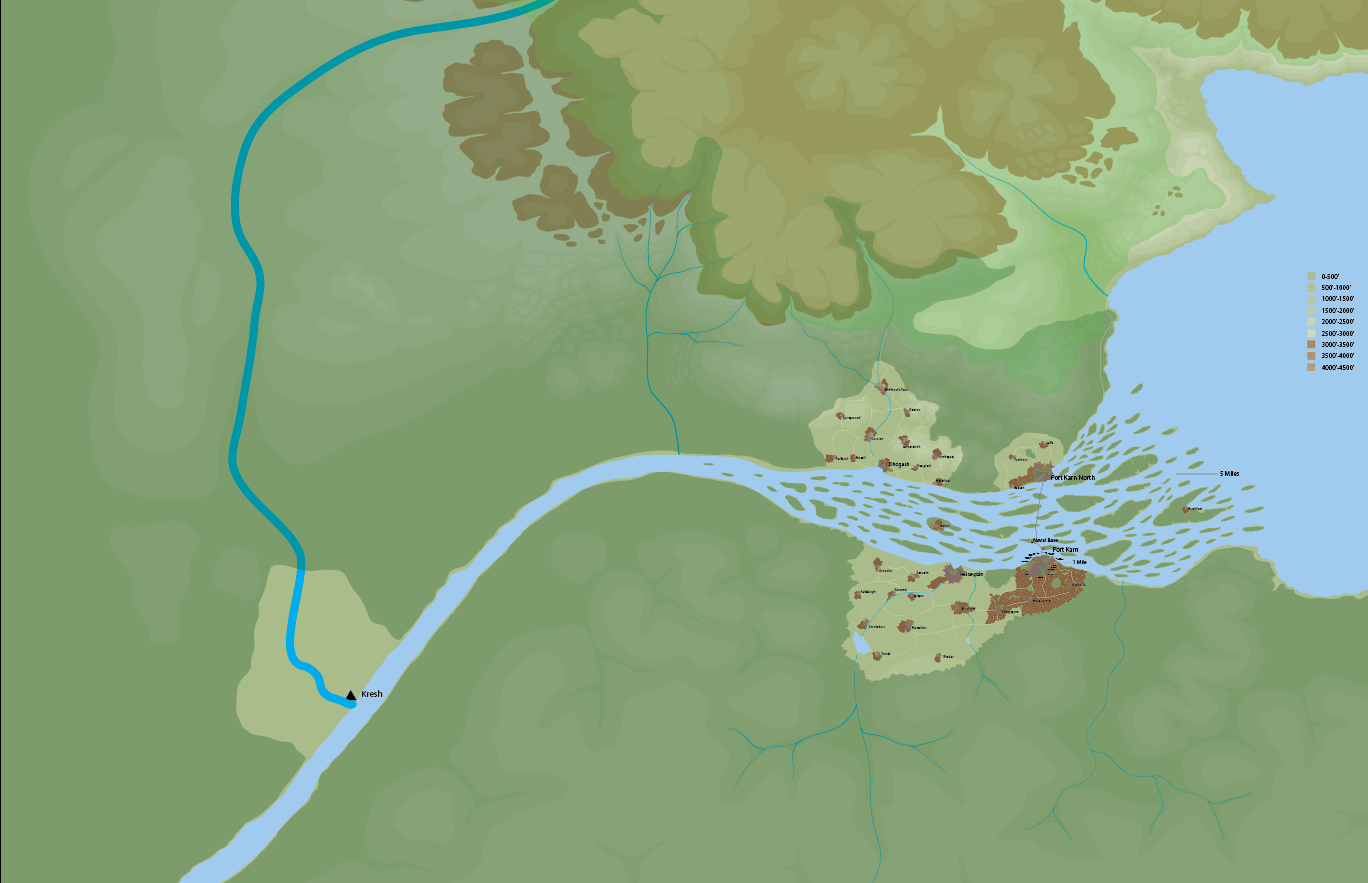
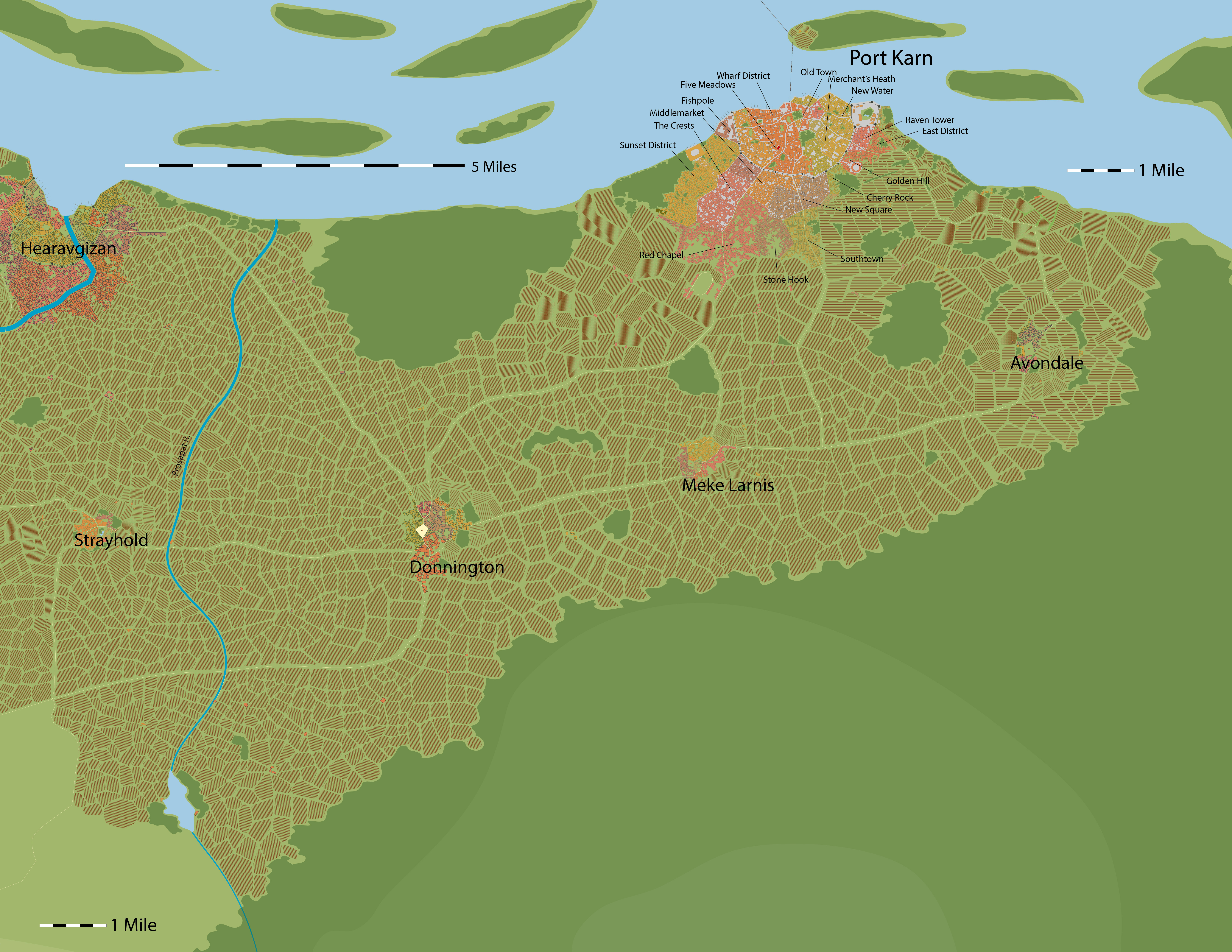
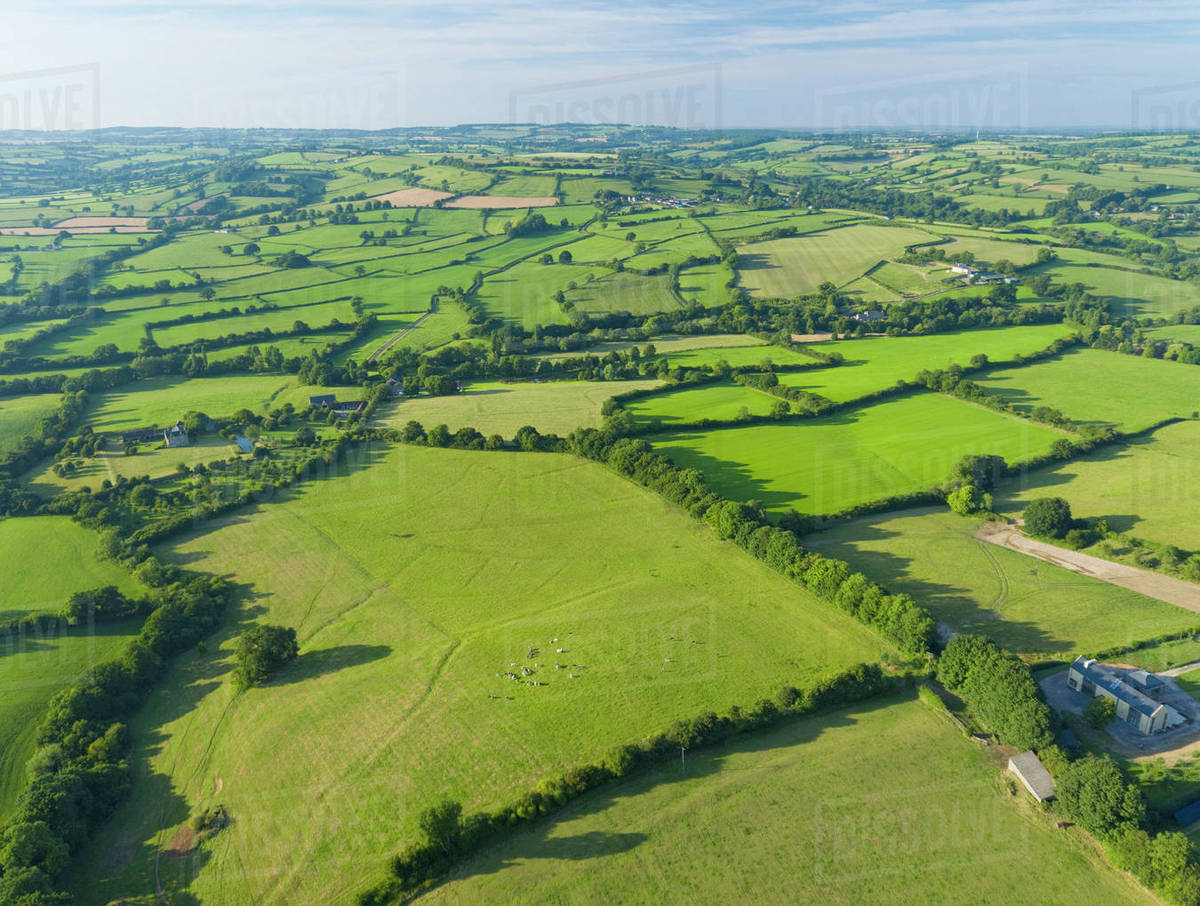
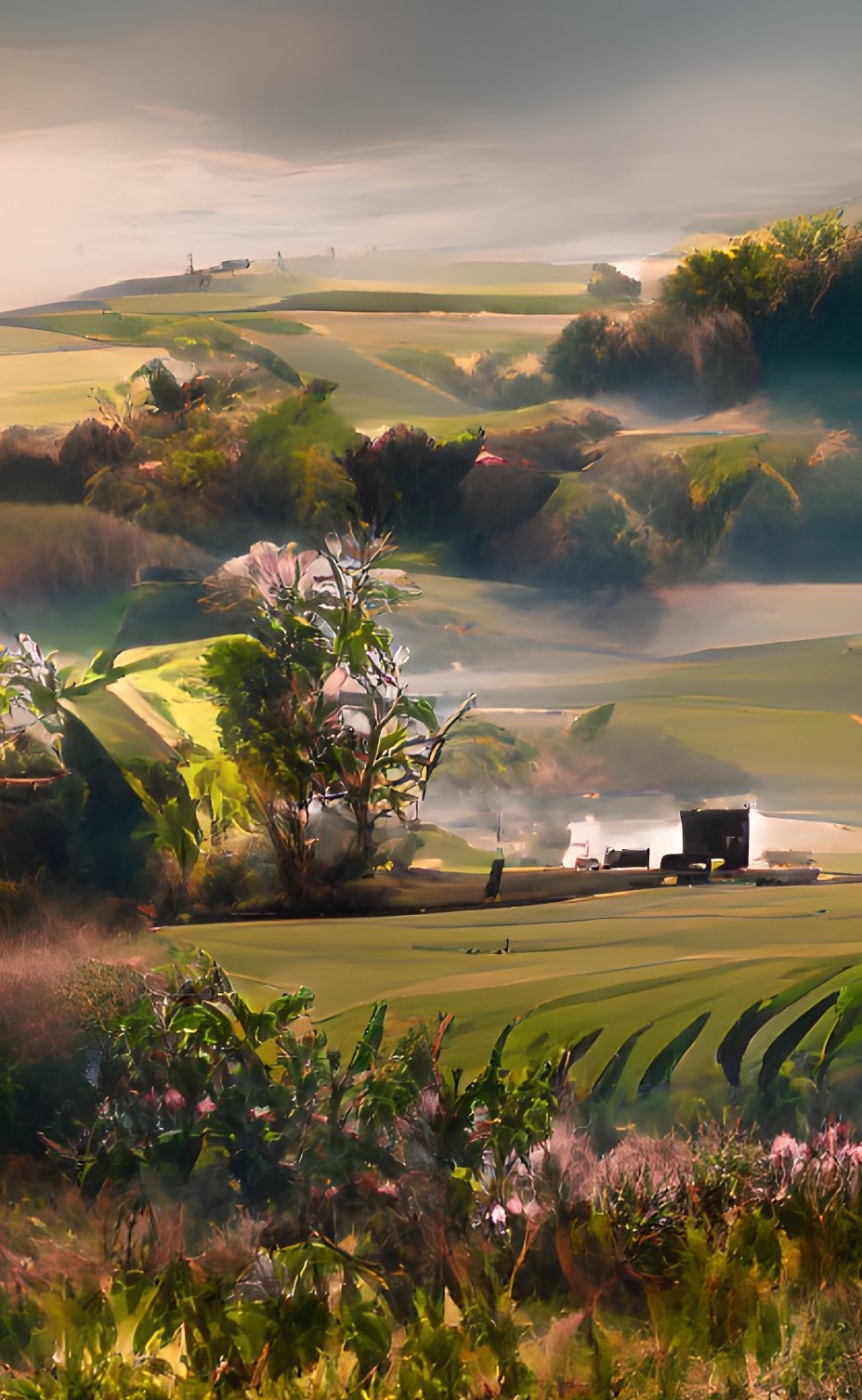
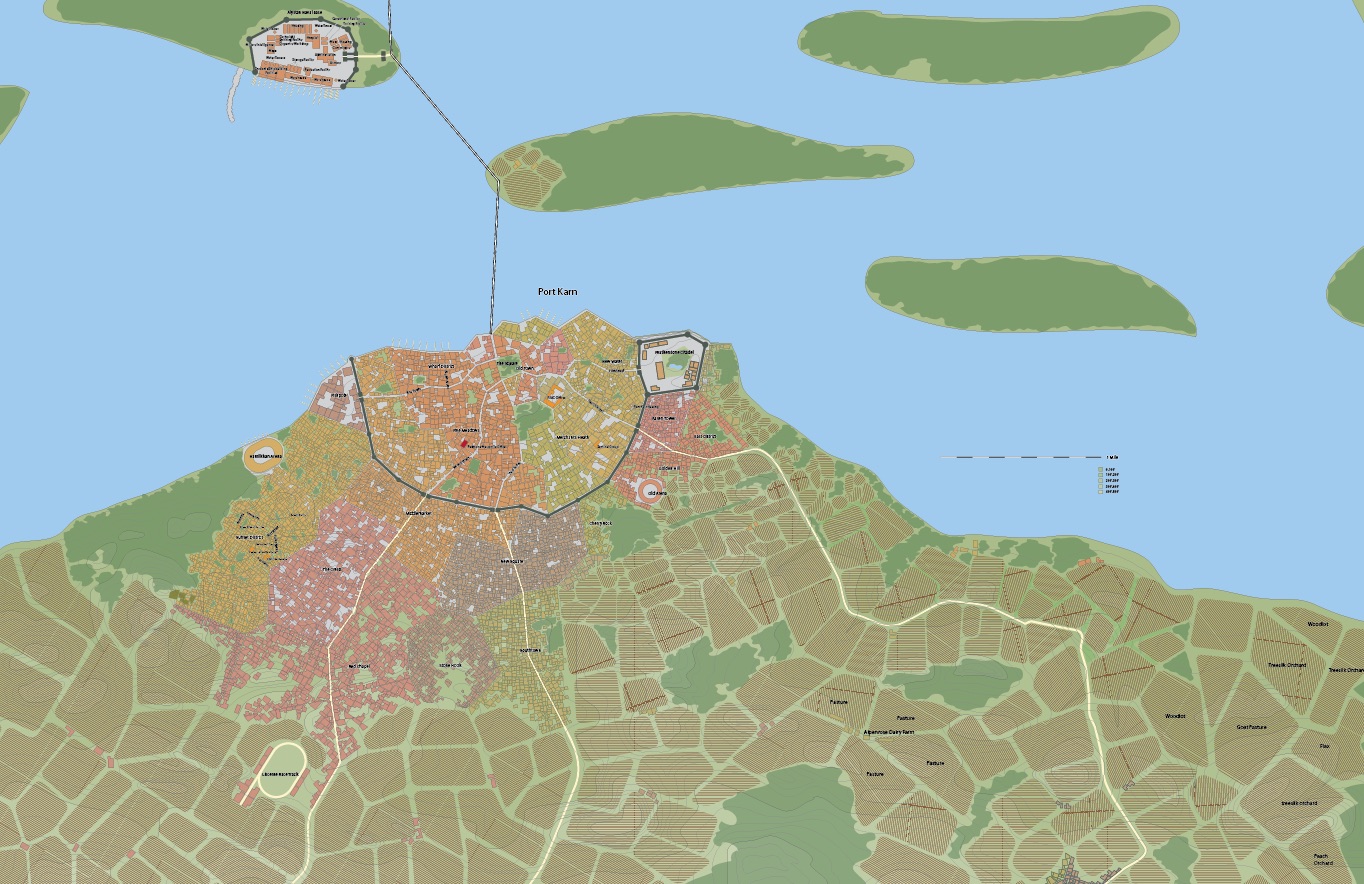
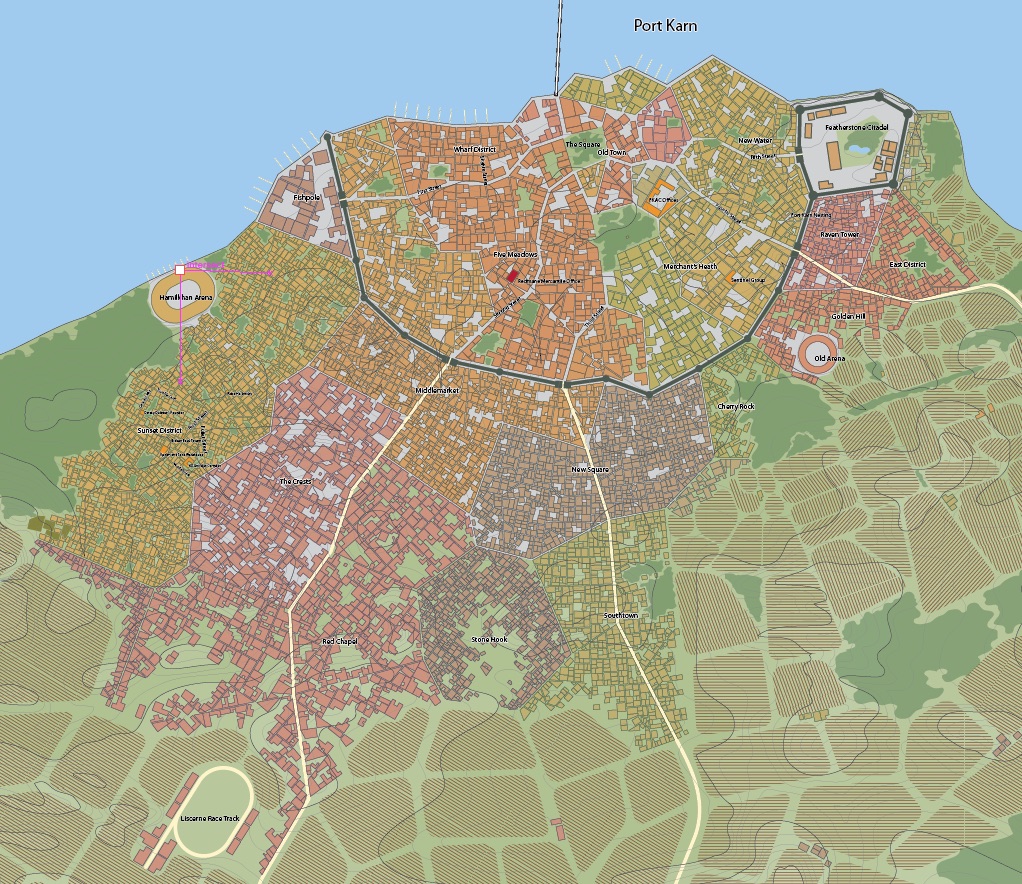
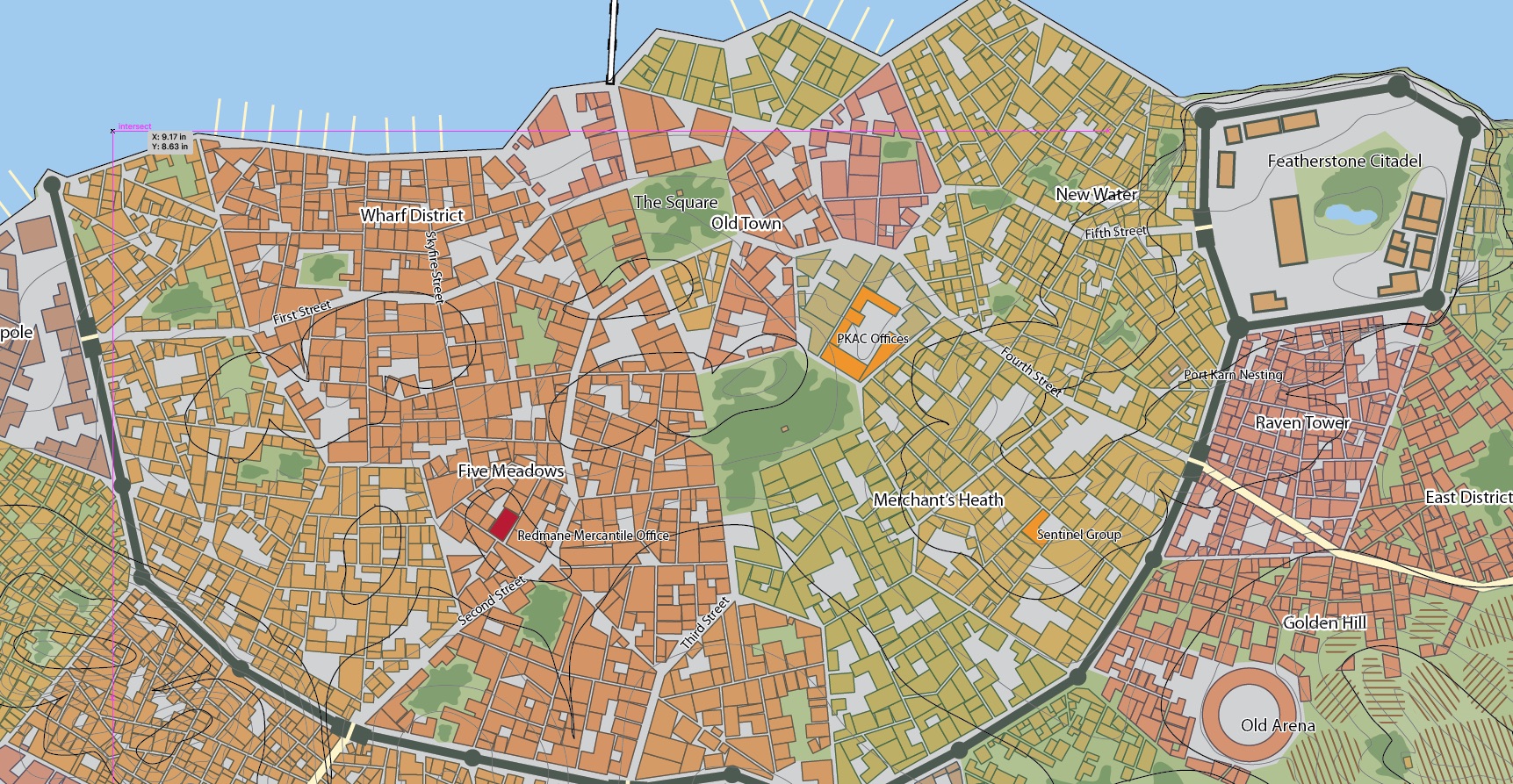
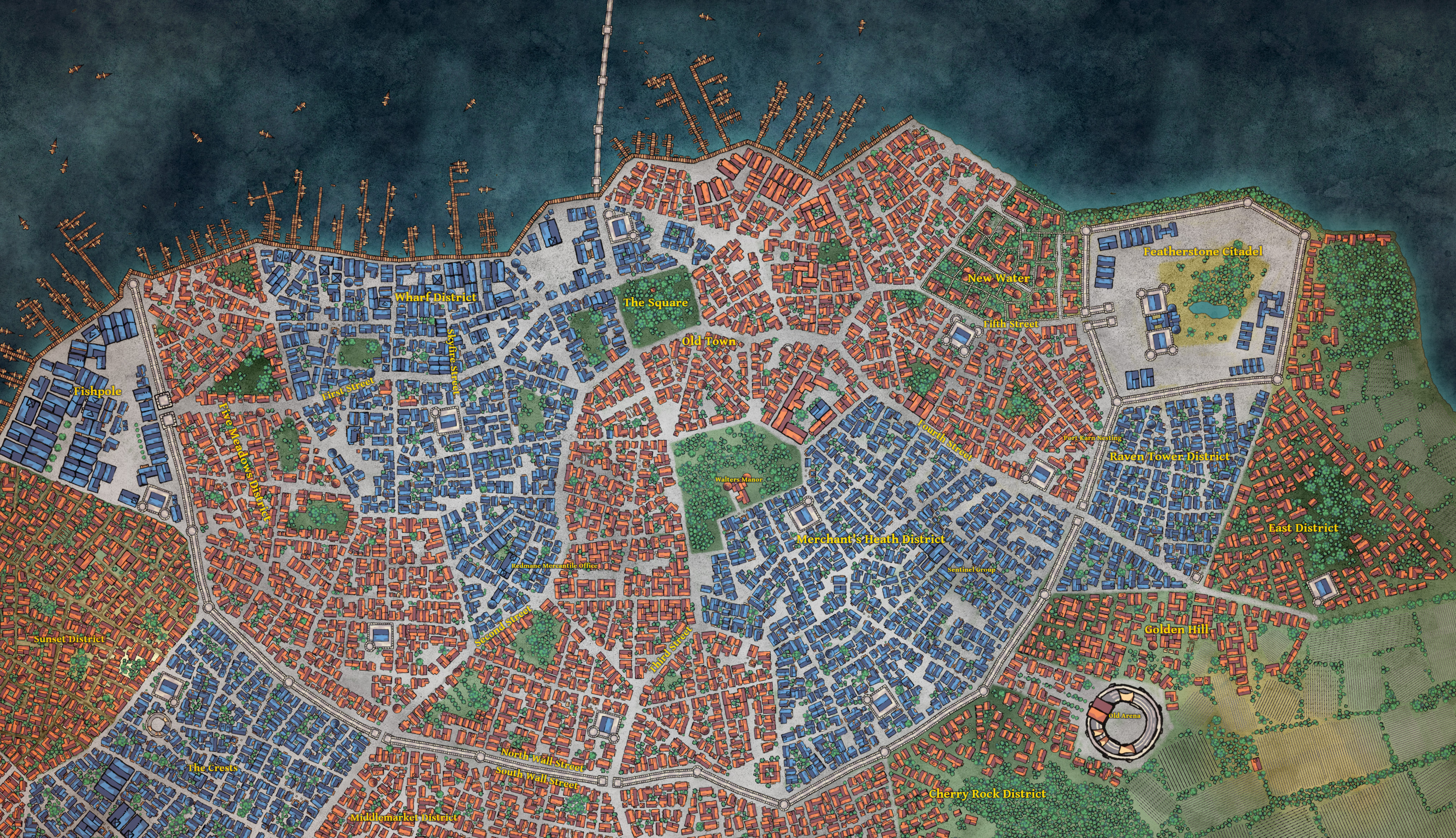
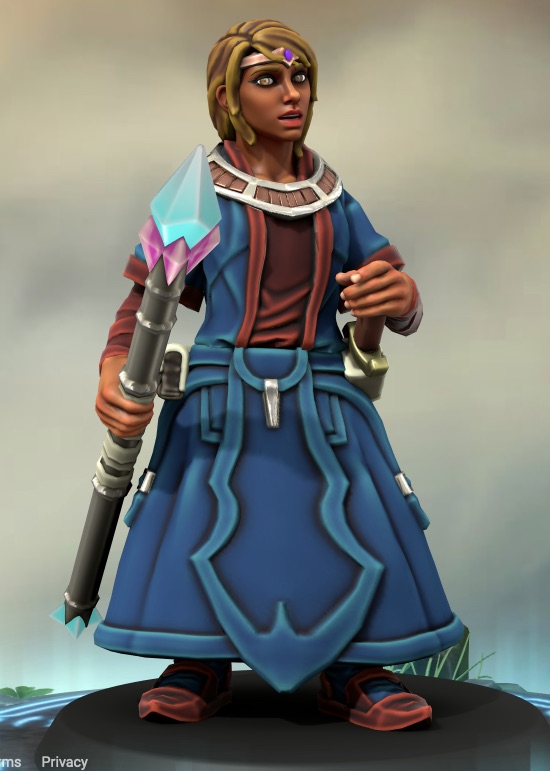
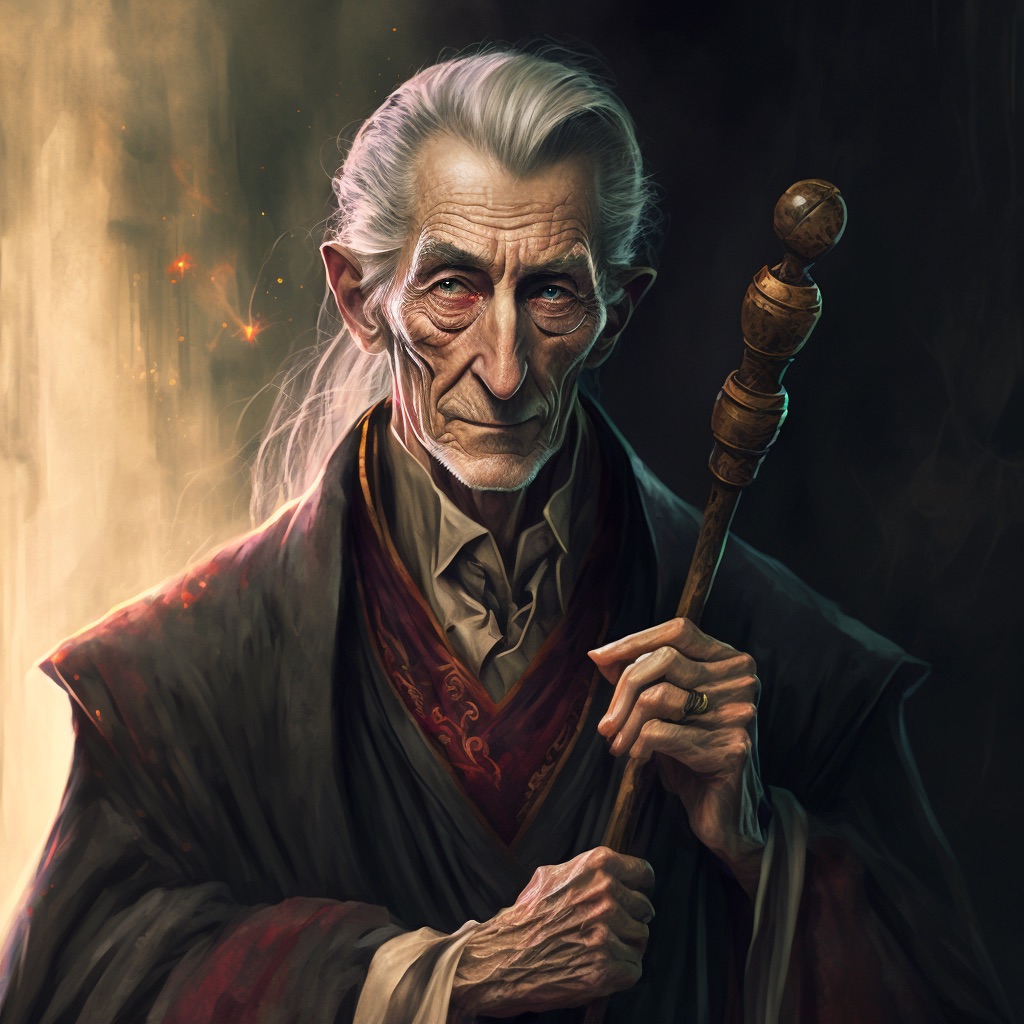

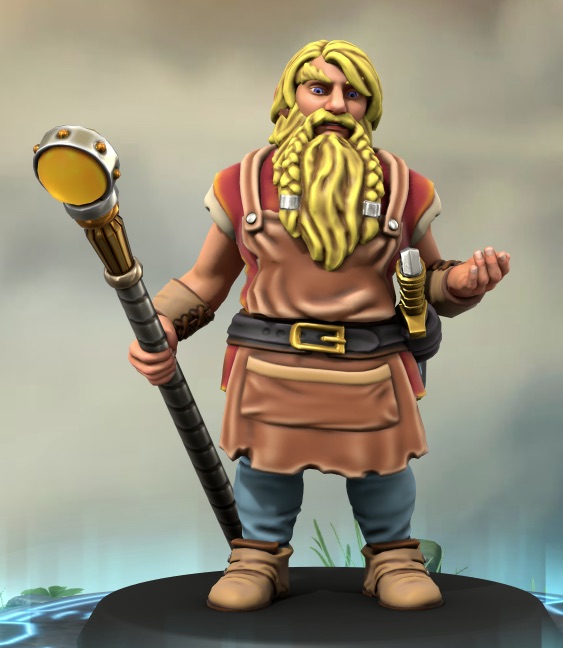


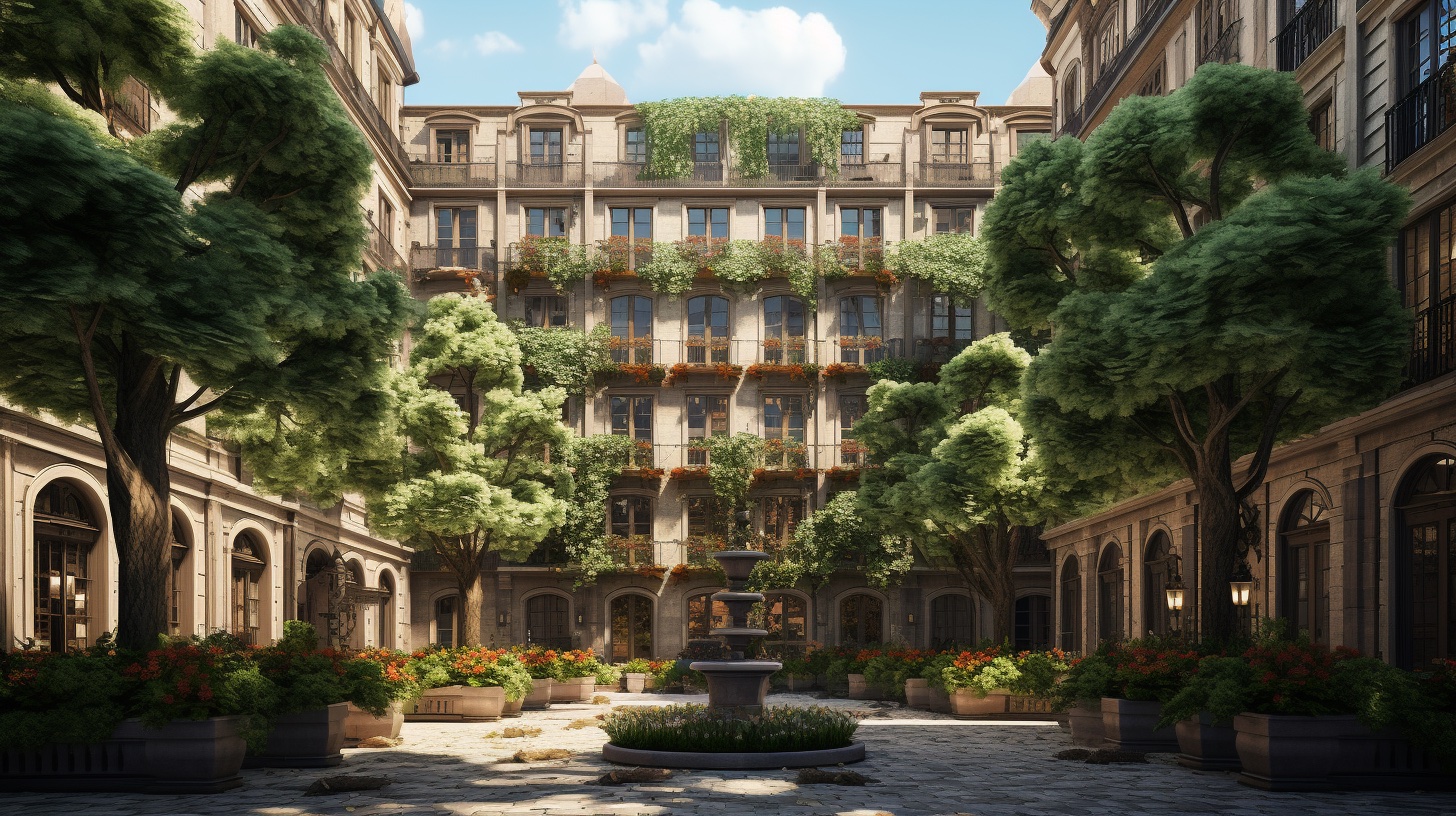


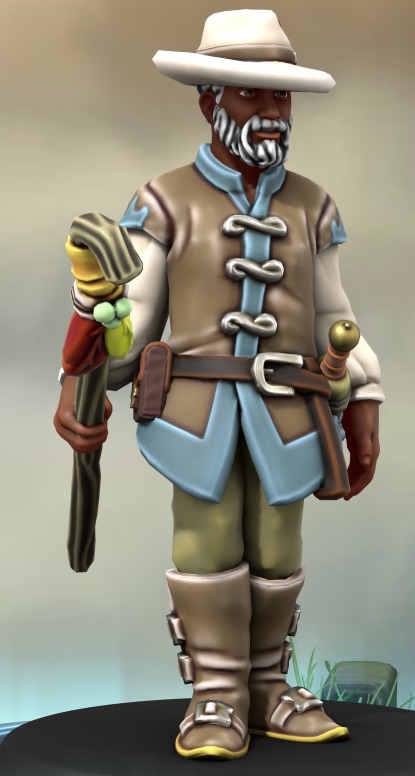
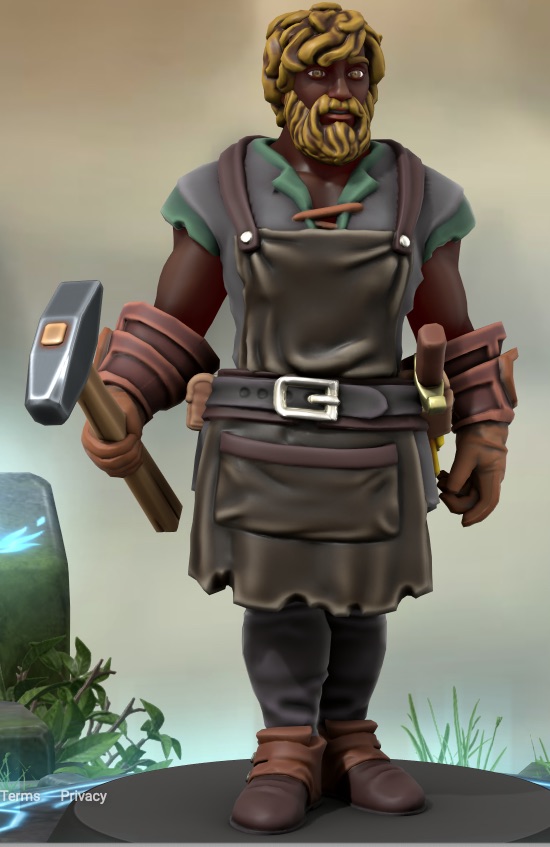



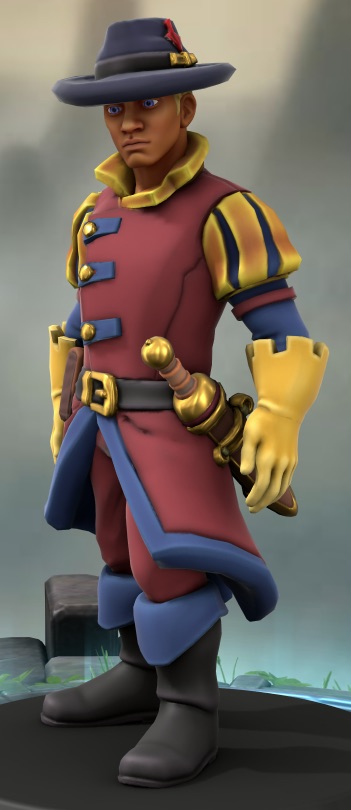


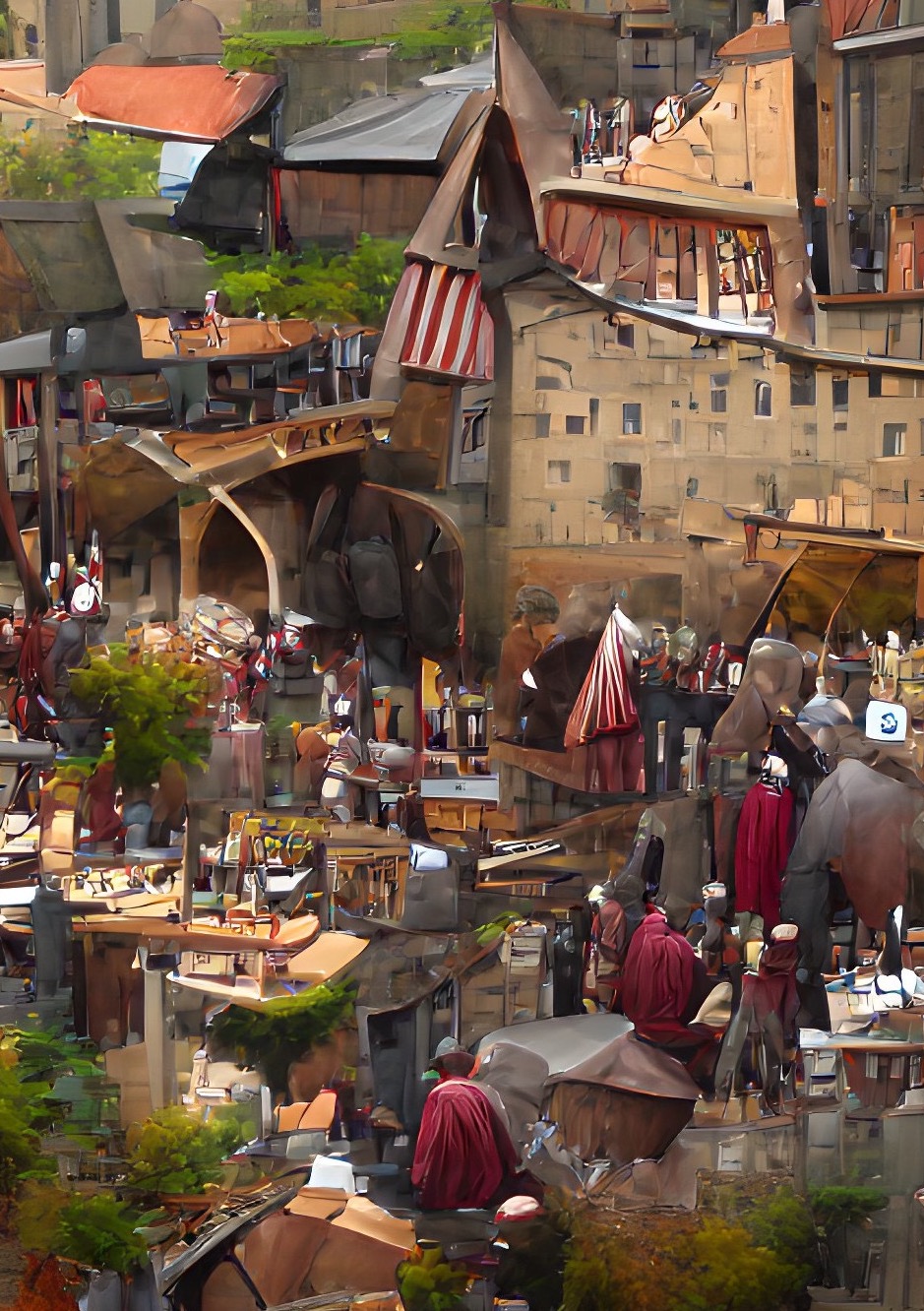


Comments